 Out of all of the Millennium movies, I think the one I was dreading the most when I began planning this series of reviews was this film, not because it's absolutely horrible or anything like that but because, much like previous entries such as Godzilla Raids Again, Godzilla vs. Biollante, Godzilla and Mothra: The Battle for Earth, and the previous film, Godzilla Against Mechagodzilla, it's never been one that does much for me. In fact, I think this film is on par with Godzilla Raids Again in terms of sheer forgetfulness. If I was forced to do these reviews without re-watching the films beforehand, I would have really been in trouble with Godzilla: Tokyo S.O.S. because it's so hard for me to remember the details of this film's plot and story. Granted, a reason for that is because, in the now over seven full years since I first saw it (the only reason I even got it was because it came in a three-pack with two other Godzilla movies that I really wanted on DVD), I've only watched it maybe four times, including my viewing for this review, but that still doesn't change the fact that this is as generic and unremarkable a Godzilla movie as you can get. Like Godzilla vs. Megaguirus, I was not at all impressed when I first saw this one. I could not believe how by-the-numbers it was and how even the scenes involving Godzilla himself lacked spark or personality (in fact, it was really with this film where I began to realize how little of a character Godzilla is for most of this Millennium series). If you read my review of the previous film, you no doubt sensed that I was not looking forward to experiencing this one again and was predicting it to be miles less impressive than its predecessor already was. Well, upon re-watching it, I've decided that's not quite the case... it's about on the same level as Godzilla Against Mechagodzilla. For the longest time, both of these movies have always run together for me when I've tried to think of them, a viewpoint that I don't think is at all invalid because they're more or less the same movie, especially in terms of their flaws. Like Godzilla Against Mechagodzilla, Godzilla: Tokyo S.O.S. is not a bad film but is merely a competent one. Like he did on the previous film, director Masaaki Tezuka shows that he's grown considerably as a director since Godzilla vs. Megaguirus and is now able to make a film that is much better than that one in terms of technicality, although that's ultimately the only true strength it has; otherwise, all of the major mistakes from the previous film (bland characters, an underdeveloped theme and concept, Godzilla being an uninteresting, generic monster, etc.) are here once again. In fact, I'll go further and say that this one has some big problems all its own, one of which is that the monster action isn't as good as it was previously. Another is that I think that their attempt to go a little more serious with this one makes the shortcomings hurt even more. And finally, I think the fact that this one, despite being only a few minutes longer than the previous one, drags a lot more puts it just a few notches below the previous one and ultimately makes for one of the most uninvolving and bland Godzilla movies ever.
Out of all of the Millennium movies, I think the one I was dreading the most when I began planning this series of reviews was this film, not because it's absolutely horrible or anything like that but because, much like previous entries such as Godzilla Raids Again, Godzilla vs. Biollante, Godzilla and Mothra: The Battle for Earth, and the previous film, Godzilla Against Mechagodzilla, it's never been one that does much for me. In fact, I think this film is on par with Godzilla Raids Again in terms of sheer forgetfulness. If I was forced to do these reviews without re-watching the films beforehand, I would have really been in trouble with Godzilla: Tokyo S.O.S. because it's so hard for me to remember the details of this film's plot and story. Granted, a reason for that is because, in the now over seven full years since I first saw it (the only reason I even got it was because it came in a three-pack with two other Godzilla movies that I really wanted on DVD), I've only watched it maybe four times, including my viewing for this review, but that still doesn't change the fact that this is as generic and unremarkable a Godzilla movie as you can get. Like Godzilla vs. Megaguirus, I was not at all impressed when I first saw this one. I could not believe how by-the-numbers it was and how even the scenes involving Godzilla himself lacked spark or personality (in fact, it was really with this film where I began to realize how little of a character Godzilla is for most of this Millennium series). If you read my review of the previous film, you no doubt sensed that I was not looking forward to experiencing this one again and was predicting it to be miles less impressive than its predecessor already was. Well, upon re-watching it, I've decided that's not quite the case... it's about on the same level as Godzilla Against Mechagodzilla. For the longest time, both of these movies have always run together for me when I've tried to think of them, a viewpoint that I don't think is at all invalid because they're more or less the same movie, especially in terms of their flaws. Like Godzilla Against Mechagodzilla, Godzilla: Tokyo S.O.S. is not a bad film but is merely a competent one. Like he did on the previous film, director Masaaki Tezuka shows that he's grown considerably as a director since Godzilla vs. Megaguirus and is now able to make a film that is much better than that one in terms of technicality, although that's ultimately the only true strength it has; otherwise, all of the major mistakes from the previous film (bland characters, an underdeveloped theme and concept, Godzilla being an uninteresting, generic monster, etc.) are here once again. In fact, I'll go further and say that this one has some big problems all its own, one of which is that the monster action isn't as good as it was previously. Another is that I think that their attempt to go a little more serious with this one makes the shortcomings hurt even more. And finally, I think the fact that this one, despite being only a few minutes longer than the previous one, drags a lot more puts it just a few notches below the previous one and ultimately makes for one of the most uninvolving and bland Godzilla movies ever. It's been about a year since the second Godzilla that first appeared in 1999 battled Mechagodzilla, aka Kiryu, in Tokyo, with the monster having not been seen since. Kiryu is undergoing repairs to the damage it suffered in its battle, while at the same time, an enormous, flying creature is pursued by two fighter jets when it enters Japanese airspace, ultimately managing to evade them. A month later, while staying at his elderly uncle's home during his time off, Kiryu engineer Yoshito Chujo meets the Shobijin, Mothra's two tiny faeries, when they appear at the house to visit his uncle, Dr. Shinichi Chujo, whom they met on Infant Island back in 1961. The Shobijin warn their old friend that the act of turning the original 1954 Godzilla's bones into Kiryu instead of allowing it to rest in peace was a revolt against the dead and that they must be returned to the sea. If they do so, Mothra will take the cyborg's place in defending Japan against Godzilla; if they refuse, Mothra will wage war on mankind. Meanwhile, as repairs on Kiryu continue, a new Kiryu squad is formed while three of the original pilots, including Akane Yashiro and Hayama, are away in America for additional training. Before leaving, Yashiro says a private goodbye to Kiryu, telling Yoshito that she feels that the cyborg doesn't want to fight anymore and feels that it might be best if it stays in disrepair. At the same time, Dr. Chujo warns Prime Minister Igarashi of what the Shobijin said but the minister is unwilling to scrap the project involving Kiryu, stating that he can't give up his duty to protect the people of Japan from the threat of Godzilla. It isn't too long before warning signs of Godzilla's inevitable return come to pass, including the discovery of the carcass of an enormous mata mata turtle and the destruction of an American submarine off the coast of Guam. Soon, Godzilla appears in the sea near Tokyo and makes a beeline for the city, apparently drawn to the bones of its relative inside Kiryu. He comes ashore and begin wreaking havoc, and while Dr. Chujo's grandson manages to call Mothra to the scene by using a bunch of chairs and desks to form her symbol, it soon becomes clear that she can't defeat Godzilla alone. Igarashi decides that they must launch Kiryu but, while the cyborg does manage to even the playing field a little, Godzilla still proves himself to be a very tough opponent. As Mothra's injuries become more severe, an egg that she laid on one of the Bonin Islands hatches two caterpillars, who quickly swim to Tokyo to help their mother. Godzilla manages to kill Mothra but the two larvae prove to be more difficult for him to deal with than he imagined and as they battle, Yoshito attempts to repair the damaged Kiryu, with the fate of Japan and all of humanity hanging in the balance.
In the previous review, I mentioned that Godzilla Against Mechagodzilla was meant to be the first in an ultimately aborted trilogy, of which Godzilla: Tokyo S.O.S. is the second chapter and whose third entry was meant to be released as the 50th anniversary film in 2004. That's what David Kalat writes in his book, anyway. However, the trivia section on the previous film's IMDB page tells it differently, saying that it was originally meant to be another standalone story, that Masaaki Tezuka was the one who talked Shogo Tomiyama into doing a follow-up, and that a third film was never planned. This is one of those instances where I'm not exactly sure who to believe and who not to. I'm mainly inclined to go with Kalat since he's such an unparalleled authority on the franchise with amazing insight into both its themes and symbolism as well as the behind-the-scenes goings-on. His idea about a proposed trilogy seems very plausible since the previous film had a very open ending and, what's more, he said that the unproduced third film was to have had Godzilla battle a clone of himself, which seems to have been set up by the post-credits scene here that shows cells and DNA gathered from Godzilla in 1999 being stored at an undisclosed laboratory, with "bio-formation" ready to begin. But, at the same time, the information that IMDB gives may not be entirely untrue either, seeing as how all of the films before Godzilla Against Mechagodzilla had open endings that were never built upon. With that in mind, it's not too farfetched to think that the previous film was also meant to be another standalone story and that the last scene here is merely meant to suggest that mankind still hasn't learned not to tamper with nature rather than serve as the prelude to another film. At the end of the day, you can only speculate about what Toho's original plan was since the next film is Godzilla: Final Wars, which ignores the events of this and the previous movie and, for now, is the final Toho-produced Godzilla movie altogether.
 As I've said, like the previous film, Godzilla: Tokyo S.O.S. is proof that Masaaki Tezuka had become a much more competent director in the years since his first ill-fated foray into Godzilla, which was no doubt helped by his working with Shusuke Kaneko on Godzilla, Mothra and King Ghidorah: Giant Monsters All-Out Attack. It's just a shame that he didn't take more pointers from Kaneko when it came to the emotional aspect of film as well as the visual because he needed that a hell of a lot more. Now, in my previous review, I went a little easy on Tezuka since I had read that he wanted a much darker, more adult-oriented story for the previous film but Shogo Tomiyama, eager to make the film as family-oriented as possible, wouldn't allow it. Here, however, I can't cut Tezuka as much slack since he co-wrote the screenplay with Masahiro Yokotani and, according to Wikipedia, even wrote the story outline for what would become the final film, whereas he simply gave input on the script for Godzilla Against Mechagodzilla. Like before, it is possible that he had ideas for the film that he couldn't implement because of Tomiyama but, still, since he was so much more involved in the writing and development process, he should have spotted that the screenplay wasn't living up to what it could be and that the pacing was a major problem. Tokyo S.O.S. is still ultimately a more well-made film than Godzilla vs. Megaguirus but it doesn't help disprove my, and a lot of other fans', feelings that Tezuka is hardly an awesome director. In any case, this has proven to be his last Godzilla film since the following one is Godzilla: Final Wars, directed by Ryuhei Kitamura. According to IMDB, Tezuka has only directed two other movies in the years since: Samurai Commando Mission 1549 in 2005 and Rescue Wings (which he also had a hand in writing) in 2008. The only thing else I can say about Tezuka is that I really hope that Toho doesn't bring him back if they ever decide to start making Godzilla films again. He seems like a nice guy and a loyal company-man but please, let someone with a lot more talent do them!
As I've said, like the previous film, Godzilla: Tokyo S.O.S. is proof that Masaaki Tezuka had become a much more competent director in the years since his first ill-fated foray into Godzilla, which was no doubt helped by his working with Shusuke Kaneko on Godzilla, Mothra and King Ghidorah: Giant Monsters All-Out Attack. It's just a shame that he didn't take more pointers from Kaneko when it came to the emotional aspect of film as well as the visual because he needed that a hell of a lot more. Now, in my previous review, I went a little easy on Tezuka since I had read that he wanted a much darker, more adult-oriented story for the previous film but Shogo Tomiyama, eager to make the film as family-oriented as possible, wouldn't allow it. Here, however, I can't cut Tezuka as much slack since he co-wrote the screenplay with Masahiro Yokotani and, according to Wikipedia, even wrote the story outline for what would become the final film, whereas he simply gave input on the script for Godzilla Against Mechagodzilla. Like before, it is possible that he had ideas for the film that he couldn't implement because of Tomiyama but, still, since he was so much more involved in the writing and development process, he should have spotted that the screenplay wasn't living up to what it could be and that the pacing was a major problem. Tokyo S.O.S. is still ultimately a more well-made film than Godzilla vs. Megaguirus but it doesn't help disprove my, and a lot of other fans', feelings that Tezuka is hardly an awesome director. In any case, this has proven to be his last Godzilla film since the following one is Godzilla: Final Wars, directed by Ryuhei Kitamura. According to IMDB, Tezuka has only directed two other movies in the years since: Samurai Commando Mission 1549 in 2005 and Rescue Wings (which he also had a hand in writing) in 2008. The only thing else I can say about Tezuka is that I really hope that Toho doesn't bring him back if they ever decide to start making Godzilla films again. He seems like a nice guy and a loyal company-man but please, let someone with a lot more talent do them!I cannot stress enough how many similarities there are between Godzilla Against Mechagodzilla and Godzilla: Tokyo S.O.S. As he did with the previous film and the overall structure of Godzilla vs. Megaguirus, Tezuka again takes what he did before and tries to do them again in order to improve upon them, only this time he doesn't make as much progress. While the lead character doesn't have a personal grudge against Godzilla, said person still develops a connection to Kiryu over the course of the film and understands the cyborg's inner turmoil (he even winds up inside of the machine during the latter part of the final battle, as Akane Yashiro did before); you have a Kiryu Squad pilot who acts as something of an antagonist to the lead character; a romantic connection between one of the pilots and someone who works on Kiryu (it's not focused on nearly as much as the one in the last film, though); another mention of this whole issue of Kiryu having a life and a soul all its own, which now has the added weight of the use of the 1954 Godzilla bones being a violation against life but, like before, is not explored nearly enough as you would like; the speculation of whether or not Kiryu will run wild again if it's deployed counterbalanced with Japan's necessity for a weapon to protect them from Godzilla and other monsters; a climactic battle that hits many of the same beats as the previous one; and a finale that's very similar to that of the previous film, right down to Godzilla and Kiryu ending up in the drink at the end. The only major difference is that Mothra and everything that comes with her is thrown into the mix this time, which isn't all that surprising since we already know that this continuity acknowledges the events of the original 1961 film that introduced her. Moreover, this film not only goes as far as to bring back Hiroshi Koizumi in the role that he played in Mothra but it also tries to make up for its inability to acknowledge Mothra vs. Godzilla by virtually remaking it. Once again, you have the Shobijin appearing in Japan to ask the Japanese government to give back something that they shouldn't have taken, said offer being rejected, Mothra coming in to protect Japan from Godzilla regardless (no major plea had to be made this time), Mothra is reaching the end of her life and is ultimately too weak to defeat Godzilla, who kills her, and finally, in the most blatant callback (although I really should say "act of plagiarism,"), Mothra has an egg that hatches out two larvae who pick up where her mother left off and wrap Godzilla up in silk to the point where he can't move. As interesting as it, though, I don't know if I like this about the film because all it ultimately does is give me deja vu for both movies that I'd rather much rather be watching instead (the original Mothra and Mothra vs. Godzilla) and for a movie I didn't really like the first time around (Godzilla Against Mechagodzilla). We'll go more into connections this film has with movies of the past later as we go but for now, I'll just say that this doesn't really help this movie endear itself to me.
 By and large, the hardest things to talk about in these more recent films are the human cast because they're so shallow and archetypal, and the characters here are no exception. Case in point, our lead, Yoshito "Yoshi" Chujo (Noburo Kaneko, who's not related to Shusuke) is a machine-obsessed mechanic who works on Kiryu and should be a very interesting character since there's a lot of conflict going on with him: he has firsthand knowledge of the Shobijin's warning but remains steadfast in feeling that Kiryu should be repaired, mainly since it's his job to do so; some shady higher-ups pressure him to tell them of the Shobijin's message with the promise that they will abandon Kiryu if they find it to be true; the new squad's head pilot, Akiba, is an ass to him for his simply being a mere mechanic as well as because of his uncle's attempt to get the government to abandon the entire Kiryu project; and one of the other pilots, whom he has something of a crush on, criticizes him for being more interested in machines than pursuing her. But, even with all of that weighing on him, Yoshito is another fairly bland lead character who doesn't do much for most of the movie except get pulled around in all of these different directions and ponder about what must be done. And as David Kalat writes, the way all of these conflicts are resolved by the end of the film is nothing special and is done so in a repeat of the climax of the previous film, with Yoshito getting trapped inside Kiryu during the final battle as Akane Yashiro was. Before that, all he had on his mind was saving his uncle and young nephew, who had gotten caught up in the battlefield, and after that, he raced to the damaged Kiryu in order to repair it so it could finish the battle with Godzilla. On the way, he ran into the Shobijin, who understood his plight to repair Kiryu, even though it went against what they and Mothra felt, and enabled him to find his case of equipment and even showed him the way to Kiryu. Once he was trapped inside the cyborg upon repairing it, all of the conflicts came to a head and were resolved, but not in a profound way. Akiba is the one saves him when Kiryu flies out to sink itself with Godzilla, settling their little difference of opinion, and the pilot Yoshito had an interest in, Azusa, is now simply happy that he survived being inside Kiryu for the latter part of the battle, so I guess that settles the dilemma between the two of them. And as for his very "complex" feelings about Kiryu? While knocked out inside the cyborg, Yoshito somehow experiences its memories of having been the original Godzilla and being turned into a Mechagodzilla when they're once again awakened by the current Godzilla's roar and, as a result, now understands its pain and tearfully says that he's sorry. That's about as far as that goes. Not only is that very hackneyed in and of itself but I don't buy this bond that Yoshito suddenly develops for Kiryu at all. While it could have been developed a lot more, I bought Yashiro's bond with it in the previous film more since she felt something of a kinship with it very early on because she thought both of their lives were worthless and whatnot, whereas Yoshito, despite the conflicts going on around him, saw it as nothing more than a cool means of defense against Godzilla and other monsters that needed to be repaired... but now, he's somehow managed to feel it's pain so it's all good now. See what I mean? You've got to develop these ideas more instead of just shoving them in there and thinking that it's good enough!
By and large, the hardest things to talk about in these more recent films are the human cast because they're so shallow and archetypal, and the characters here are no exception. Case in point, our lead, Yoshito "Yoshi" Chujo (Noburo Kaneko, who's not related to Shusuke) is a machine-obsessed mechanic who works on Kiryu and should be a very interesting character since there's a lot of conflict going on with him: he has firsthand knowledge of the Shobijin's warning but remains steadfast in feeling that Kiryu should be repaired, mainly since it's his job to do so; some shady higher-ups pressure him to tell them of the Shobijin's message with the promise that they will abandon Kiryu if they find it to be true; the new squad's head pilot, Akiba, is an ass to him for his simply being a mere mechanic as well as because of his uncle's attempt to get the government to abandon the entire Kiryu project; and one of the other pilots, whom he has something of a crush on, criticizes him for being more interested in machines than pursuing her. But, even with all of that weighing on him, Yoshito is another fairly bland lead character who doesn't do much for most of the movie except get pulled around in all of these different directions and ponder about what must be done. And as David Kalat writes, the way all of these conflicts are resolved by the end of the film is nothing special and is done so in a repeat of the climax of the previous film, with Yoshito getting trapped inside Kiryu during the final battle as Akane Yashiro was. Before that, all he had on his mind was saving his uncle and young nephew, who had gotten caught up in the battlefield, and after that, he raced to the damaged Kiryu in order to repair it so it could finish the battle with Godzilla. On the way, he ran into the Shobijin, who understood his plight to repair Kiryu, even though it went against what they and Mothra felt, and enabled him to find his case of equipment and even showed him the way to Kiryu. Once he was trapped inside the cyborg upon repairing it, all of the conflicts came to a head and were resolved, but not in a profound way. Akiba is the one saves him when Kiryu flies out to sink itself with Godzilla, settling their little difference of opinion, and the pilot Yoshito had an interest in, Azusa, is now simply happy that he survived being inside Kiryu for the latter part of the battle, so I guess that settles the dilemma between the two of them. And as for his very "complex" feelings about Kiryu? While knocked out inside the cyborg, Yoshito somehow experiences its memories of having been the original Godzilla and being turned into a Mechagodzilla when they're once again awakened by the current Godzilla's roar and, as a result, now understands its pain and tearfully says that he's sorry. That's about as far as that goes. Not only is that very hackneyed in and of itself but I don't buy this bond that Yoshito suddenly develops for Kiryu at all. While it could have been developed a lot more, I bought Yashiro's bond with it in the previous film more since she felt something of a kinship with it very early on because she thought both of their lives were worthless and whatnot, whereas Yoshito, despite the conflicts going on around him, saw it as nothing more than a cool means of defense against Godzilla and other monsters that needed to be repaired... but now, he's somehow managed to feel it's pain so it's all good now. See what I mean? You've got to develop these ideas more instead of just shoving them in there and thinking that it's good enough! It's really nice to see Hiroshi Koizumi again for the first time in almost 20 years and I also think it's even cooler that they brought him back to reprise his character of Dr. Chujo from the original Mothra, going as far as to introduce him in the same way they did there, with his face initially obscured by something that he's reading. He ultimately doesn't have much to do except tell you and everyone around him of the events of that film (which was good for me when I first watched this movie because I hadn't seen Mothra by that point) and fruitlessly attempt to convince Prime Minister Igarashi of the Shobijin's warning but, regardless, that doesn't bug me since Koizumi is one of those actors in these films that I always like watching. He makes Chujo come across as a very kind-hearted, wise old man who understands from experience the mistakes that mankind is capable of and does what he can in helping the Shobijin get their message to the government, but, like I said, he's ultimately unsuccessful in doing so. Sadly, once that part of the movie passes, Chujo isn't much more than just a spectator. I get that, given Koizumi's advanced age, they couldn't have him get caught up in the climactic battle or do anything physical like Kaneko does, but I think they could have at least gone more into the relationship between Chujo and his nephew and their conflicting thoughts about what must be done with Kiryu. They hint at it for a bit but, ultimately, nothing comes of it. And, again, once he's fulfilled his purpose, Chujo doesn't have anything else to do other than chase his grandson, who's attempting to call Mothra by forming her symbol with a bunch of furniture, as Chujo himself described to him as a way of contacting the giant moth, around Tokyo, get caught up in some rubble as a result of the ongoing monster battle, and get taken to some medics by Yoshito, where he and his grandson stay for the rest of the film. But, as I've said, as limited as his role is, I'm not going to complain since I just like seeing Koizumi again in what will probably be the last time you'll ever see him in one of these flicks.
It's really nice to see Hiroshi Koizumi again for the first time in almost 20 years and I also think it's even cooler that they brought him back to reprise his character of Dr. Chujo from the original Mothra, going as far as to introduce him in the same way they did there, with his face initially obscured by something that he's reading. He ultimately doesn't have much to do except tell you and everyone around him of the events of that film (which was good for me when I first watched this movie because I hadn't seen Mothra by that point) and fruitlessly attempt to convince Prime Minister Igarashi of the Shobijin's warning but, regardless, that doesn't bug me since Koizumi is one of those actors in these films that I always like watching. He makes Chujo come across as a very kind-hearted, wise old man who understands from experience the mistakes that mankind is capable of and does what he can in helping the Shobijin get their message to the government, but, like I said, he's ultimately unsuccessful in doing so. Sadly, once that part of the movie passes, Chujo isn't much more than just a spectator. I get that, given Koizumi's advanced age, they couldn't have him get caught up in the climactic battle or do anything physical like Kaneko does, but I think they could have at least gone more into the relationship between Chujo and his nephew and their conflicting thoughts about what must be done with Kiryu. They hint at it for a bit but, ultimately, nothing comes of it. And, again, once he's fulfilled his purpose, Chujo doesn't have anything else to do other than chase his grandson, who's attempting to call Mothra by forming her symbol with a bunch of furniture, as Chujo himself described to him as a way of contacting the giant moth, around Tokyo, get caught up in some rubble as a result of the ongoing monster battle, and get taken to some medics by Yoshito, where he and his grandson stay for the rest of the film. But, as I've said, as limited as his role is, I'm not going to complain since I just like seeing Koizumi again in what will probably be the last time you'll ever see him in one of these flicks.  |
| I don't know if this photo is from this film but it's the best image of Nakao around this time period that I could find. |
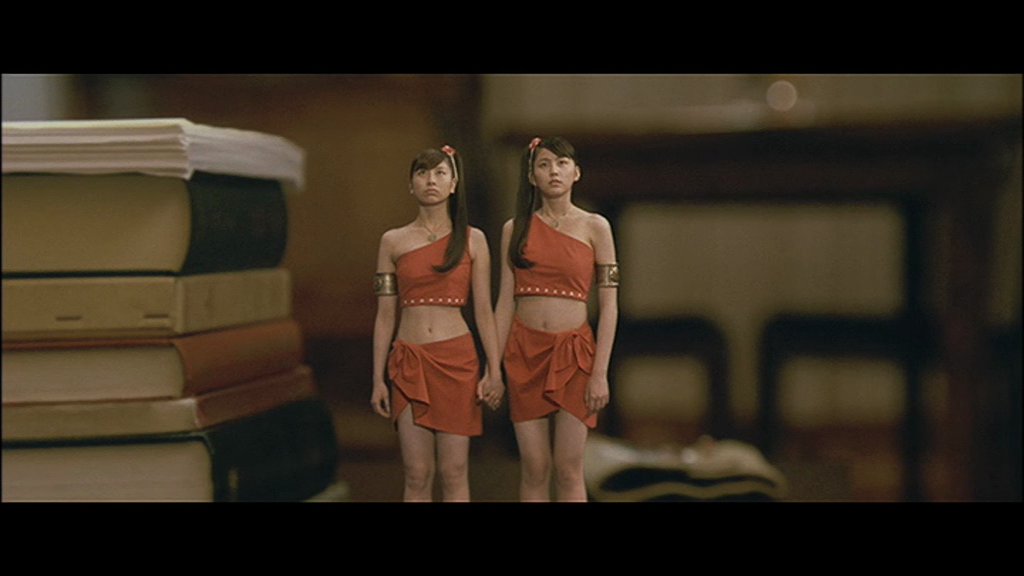 After having not be seen in any capacity since their brief appearances in Godzilla vs. SpaceGodzilla, it is sort of nice to see Mothra's two tiny faeries (Masami Nagasawa and Chihiro Otsuka). And like the presence of Hiroshi Koizumi as Dr. Chujo, it's also cool that they truly are the Shobijin again (although, it's specified that these are not the exact same faeries that appeared in the original Mothra) and are wearing the same type of native clothing that they wore back whenever they appeared in the Showa movies. Their role, as it usually was whenever they appeared in the past, doesn't amount to much more than acting as messengers and warning the main characters about what will happen if the Japanese people don't do what they must, as well as reiterating that message when the need arises and singing for Mothra (I don't really see what purpose that serves for her, though). And in case you're wondering, they themselves don't send Mothra to help in battling Godzilla; Mothra just somehow senses it when Dr. Chujo's grandson, Shun, creates her symbol using a bunch of furniture and shows up as soon as it's finished. By the way, here's something I have to ponder: why didn't the Shobijin just appear to Prime Minister Igarashi himself? I know that they trust Chujo given how helped their relatives in the past and that Igarashi doesn't really trust Mothra given what happened before but still, I'd think if they went to see the PM personally, they might be able to get somewhere since Igarashi is a reasonable enough man. Exactly what do they think that Chujo, who's now a retired, old man, can accomplish? I guess the short answer is that there wouldn't be a movie if they went to Igarashi and got it straightened out right then and there but I still can't help but bring it up. Their presence here might not have any purpose other than setting the plot in motion and reiterating the big "theme" of it all but it's still nice to see Mothra's faeries in their classic characterization and appearance as the Shobijin once again.
After having not be seen in any capacity since their brief appearances in Godzilla vs. SpaceGodzilla, it is sort of nice to see Mothra's two tiny faeries (Masami Nagasawa and Chihiro Otsuka). And like the presence of Hiroshi Koizumi as Dr. Chujo, it's also cool that they truly are the Shobijin again (although, it's specified that these are not the exact same faeries that appeared in the original Mothra) and are wearing the same type of native clothing that they wore back whenever they appeared in the Showa movies. Their role, as it usually was whenever they appeared in the past, doesn't amount to much more than acting as messengers and warning the main characters about what will happen if the Japanese people don't do what they must, as well as reiterating that message when the need arises and singing for Mothra (I don't really see what purpose that serves for her, though). And in case you're wondering, they themselves don't send Mothra to help in battling Godzilla; Mothra just somehow senses it when Dr. Chujo's grandson, Shun, creates her symbol using a bunch of furniture and shows up as soon as it's finished. By the way, here's something I have to ponder: why didn't the Shobijin just appear to Prime Minister Igarashi himself? I know that they trust Chujo given how helped their relatives in the past and that Igarashi doesn't really trust Mothra given what happened before but still, I'd think if they went to see the PM personally, they might be able to get somewhere since Igarashi is a reasonable enough man. Exactly what do they think that Chujo, who's now a retired, old man, can accomplish? I guess the short answer is that there wouldn't be a movie if they went to Igarashi and got it straightened out right then and there but I still can't help but bring it up. Their presence here might not have any purpose other than setting the plot in motion and reiterating the big "theme" of it all but it's still nice to see Mothra's faeries in their classic characterization and appearance as the Shobijin once again. 

Going into this film after having seen the previous one, you're already aware that this continuity acknowledges the events of the original Mothra among other films but, as we saw last time during Prime Minister Tsuge's recollection, it does so up to a point (particularly in the case of the previous movie's English dub, where Tsuge says that they managed to kill Mothra, which is false in both context to that movie and this continuity). The connection is made more solid here due to the return of Dr. Chujo and his recollection of the kidnapping of the Shobijin that led to Mothra's destructive rampage but, at the same time, some aspects of that movie are completely ignored. Most significantly, the fictional country of Rosilica and Mothra's final rampage in the capital city of New Kirk are never mentioned, with everyone acting as if the finale took place in Tokyo. Moreover, here we're told that the two faeries that come to visit Chujo at the beginning are not the same Shobijin that he met back in 1961 but rather relatives of them, and that Mothra has laid on egg on one of the Bonin Islands, with the fate of Infant Island and the natives there left completely unexplained. And finally, Chujo's recollection of the events of Mothra, as accurate as they are, ultimately kind of fly in the face of how Minister Tsuge recalled it previously, with Mothra being described there as just another rampaging monster like Godzilla and that they had to develop an advanced heat-gun to deal with her. To be fair, this fast and loose approach to continuity is hardly new to Toho, with the Showa series being held together by a fairly tenuous one that was broken so many times that your head will explode if you try to keep it straight and even the stringent Heisei series making blunders with it, especially when you throw the time-traveling story of Godzilla vs. King Ghidorah into the mix. And let's not forget how the Millennium series is nothing more than a bunch of standalone movies that use the original Godzilla as the basis for their stories and have often changed the events of that film to suit their purposes. At the same time, though, it seems like they were really trying to keep a solid connection with some of the past movies in this continuity, which is a little hard to do when you change things to the point where you're contradicting what you already decided to follow in the previous film. As I've said before, it's very possible that I'm looking into this far more than I need to but I do still think they should have been more serious in keeping the continuity straight in this instance.
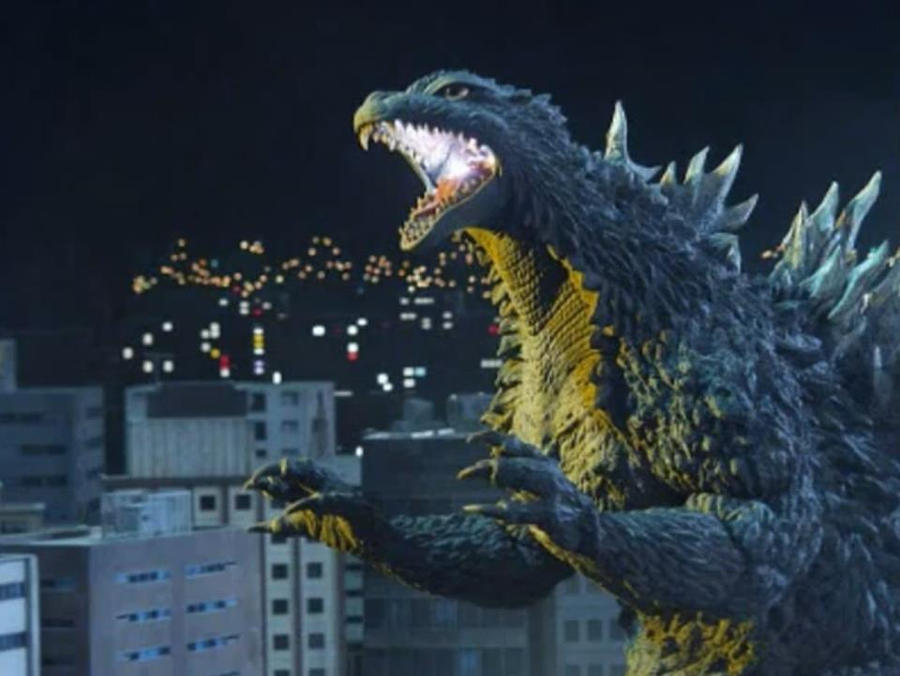

 They do attempt to give Godzilla himself something more of a personality and agenda here by saying that he's attracted by the bones within Kiryu, which is why when he appears here and heads for Tokyo, he ignores the JSDF's attempts to lure him to Shinagawa and instead travels in the direction where Kiryu is being kept. However, as has become the norm for these films, they don't elaborate on it enough. They don't explain at all how Godzilla suddenly knows about the bones, going as far as to try to pass it off as his reason for attacking in the previous film. That, however, doesn't hold water since Godzilla was just attacking and destroying the city like usual there and didn't seem at all concerned with Kiryu's bones, seeing the cyborg as just an opponent. And that's another thing: they don't get into what Godzilla's purpose for the bones is. My personal guess would be that in sensing the bones within Kiryu, he sees it as a competitor for his turf and is simply defending what he feels is his territory but, at the same time, maybe Godzilla wants to do what the Shobijin say should be done with the bones himself and return them to the sea but is forced into fighting Kiryu in order to do so. Again, there's a lot of potential there but it's simply thrown out there and not developed any further. Aside from that, Godzilla's characterization, or lack thereof, is the same as it was previously: a typical rampaging monster whose only real purpose is to give the humans something to contend with. Like before, they show that Godzilla isn't at all stupid and that he does have a cunning animal instinct to him, able to come up with interesting and smart ways to battle Mothra and Kiryu, which I do like, but I wish he wasn't as bland and uninteresting as he has been lately. As you can see, his design is virtually unchanged from the previous film, with the only difference being a noticeable scar on his chest that was inflicted by Kiryu's Absolute Zero Cannon (and whose pattern has always reminded me of the facehuggers in the Alien movies). As a result, he still looks great, with his face once again being wonderfully articulated and full of expressions. His atomic blast is the same traditional blue that it was reverted to in the past two films, although it's still not quite as powerful here as it was in Godzilla, Mothra and King Ghidorah. And his vocalizations are still the same as they have been in the Millennium, although they reused a lot of his classic Showa sounds including the bizarre noise that I've always thought sounded like creaking metal and his injured screech, as well as a new, hollow-sounding scream that he gives off when Kiryu severely injures with its new drill-weapon near the end of the film.
They do attempt to give Godzilla himself something more of a personality and agenda here by saying that he's attracted by the bones within Kiryu, which is why when he appears here and heads for Tokyo, he ignores the JSDF's attempts to lure him to Shinagawa and instead travels in the direction where Kiryu is being kept. However, as has become the norm for these films, they don't elaborate on it enough. They don't explain at all how Godzilla suddenly knows about the bones, going as far as to try to pass it off as his reason for attacking in the previous film. That, however, doesn't hold water since Godzilla was just attacking and destroying the city like usual there and didn't seem at all concerned with Kiryu's bones, seeing the cyborg as just an opponent. And that's another thing: they don't get into what Godzilla's purpose for the bones is. My personal guess would be that in sensing the bones within Kiryu, he sees it as a competitor for his turf and is simply defending what he feels is his territory but, at the same time, maybe Godzilla wants to do what the Shobijin say should be done with the bones himself and return them to the sea but is forced into fighting Kiryu in order to do so. Again, there's a lot of potential there but it's simply thrown out there and not developed any further. Aside from that, Godzilla's characterization, or lack thereof, is the same as it was previously: a typical rampaging monster whose only real purpose is to give the humans something to contend with. Like before, they show that Godzilla isn't at all stupid and that he does have a cunning animal instinct to him, able to come up with interesting and smart ways to battle Mothra and Kiryu, which I do like, but I wish he wasn't as bland and uninteresting as he has been lately. As you can see, his design is virtually unchanged from the previous film, with the only difference being a noticeable scar on his chest that was inflicted by Kiryu's Absolute Zero Cannon (and whose pattern has always reminded me of the facehuggers in the Alien movies). As a result, he still looks great, with his face once again being wonderfully articulated and full of expressions. His atomic blast is the same traditional blue that it was reverted to in the past two films, although it's still not quite as powerful here as it was in Godzilla, Mothra and King Ghidorah. And his vocalizations are still the same as they have been in the Millennium, although they reused a lot of his classic Showa sounds including the bizarre noise that I've always thought sounded like creaking metal and his injured screech, as well as a new, hollow-sounding scream that he gives off when Kiryu severely injures with its new drill-weapon near the end of the film. I would love to be able to tell you that with this film, they took the opportunity to build upon the idea they introduced previously of the new Mechagodzilla having the soul of the original 1954 Godzilla within it due to the bones but I'd be lying if I did. Even though they had a whole other movie to explore this interesting idea, which could have excused the previous film as merely a buildup to it, you leave this movie with little more insight into the inner turmoil Kiryu (Motokuni Nakagawa) is said to experiencing than you did at the end of the previous movie. Once again, you just get people talking and arguing about it, with Yashiro mentioning at the beginning how she feels that Kiryu doesn't want to fight anymore and Yoshito feeling that the cyborg must be repaired in case Godzilla returns, as does just about everyone else around him, and the Shobijin warning that the monster's creation was a violation of the natural order of things, and so forth. You as a viewer, however, still don't get any personal insight into what's going on within the machine's soul. Kiryu spends the first half of the movie sitting around in the hangar while everyone tries to figure out how best to repair it and the majority of the big fight under the control of the humans as a weapon to combat Godzilla. It's only near the very end of the movie when Yoshito gets trapped inside Kiryu during the latter part of the battle that the idea of the soul comes back up, with it being awakened again by Godzilla's howl and with Yoshito suddenly sensing all of Kiryu's past memories, saying that he now realizes that the cyborg simply wanted to sleep peacefully rather than be forced to fight. He says that he now understands Kiryu and says that he's sorry, prompting the cyborg to take matters into its own hands after a brief section where it refuses to operate, grab ahold of Godzilla, who's been completely encased in the webbing of the Mothra larvae, fly out to the ocean, and allow themselves to sink to the bottom of the Japan Trench. What's more, when Kiryu allows Yoshito to escape from inside it, it puts a final message for him on a video monitor inside it: SAYONARA YOSHITO. Again, we get no personal insight into this, just a character experiencing Kiryu's inner pain so he can understand it and tell us what it wants the most, and just because said character says that he's sorry, Kiryu decides to save humanity by sinking itself along with Godzilla and has even suddenly developed enough of a bond with that character to make it easier for him to escape from inside it and tell him "goodbye" as well. It's just amazing how we've had two movies concerning this fascinating idea of a Mechagodzilla with an actual soul and yet, they do virtually nothing with it or, at least, nothing that allows us a firsthand experience of it. Yoshito says that he now understands Kiryu; it would have been nice if the audience had been allowed to understand the cyborg as well!
I would love to be able to tell you that with this film, they took the opportunity to build upon the idea they introduced previously of the new Mechagodzilla having the soul of the original 1954 Godzilla within it due to the bones but I'd be lying if I did. Even though they had a whole other movie to explore this interesting idea, which could have excused the previous film as merely a buildup to it, you leave this movie with little more insight into the inner turmoil Kiryu (Motokuni Nakagawa) is said to experiencing than you did at the end of the previous movie. Once again, you just get people talking and arguing about it, with Yashiro mentioning at the beginning how she feels that Kiryu doesn't want to fight anymore and Yoshito feeling that the cyborg must be repaired in case Godzilla returns, as does just about everyone else around him, and the Shobijin warning that the monster's creation was a violation of the natural order of things, and so forth. You as a viewer, however, still don't get any personal insight into what's going on within the machine's soul. Kiryu spends the first half of the movie sitting around in the hangar while everyone tries to figure out how best to repair it and the majority of the big fight under the control of the humans as a weapon to combat Godzilla. It's only near the very end of the movie when Yoshito gets trapped inside Kiryu during the latter part of the battle that the idea of the soul comes back up, with it being awakened again by Godzilla's howl and with Yoshito suddenly sensing all of Kiryu's past memories, saying that he now realizes that the cyborg simply wanted to sleep peacefully rather than be forced to fight. He says that he now understands Kiryu and says that he's sorry, prompting the cyborg to take matters into its own hands after a brief section where it refuses to operate, grab ahold of Godzilla, who's been completely encased in the webbing of the Mothra larvae, fly out to the ocean, and allow themselves to sink to the bottom of the Japan Trench. What's more, when Kiryu allows Yoshito to escape from inside it, it puts a final message for him on a video monitor inside it: SAYONARA YOSHITO. Again, we get no personal insight into this, just a character experiencing Kiryu's inner pain so he can understand it and tell us what it wants the most, and just because said character says that he's sorry, Kiryu decides to save humanity by sinking itself along with Godzilla and has even suddenly developed enough of a bond with that character to make it easier for him to escape from inside it and tell him "goodbye" as well. It's just amazing how we've had two movies concerning this fascinating idea of a Mechagodzilla with an actual soul and yet, they do virtually nothing with it or, at least, nothing that allows us a firsthand experience of it. Yoshito says that he now understands Kiryu; it would have been nice if the audience had been allowed to understand the cyborg as well!
 Of the three main monsters in this film, Mothra is by far the most developed, which largely stems from this story being in continuity with the original 1961 film. As she's often been portrayed in the past, Mothra comes across as a benevolent and well-meaning but, at the same time, stern deity who will do what she feels is right no matter what. To that end, Mothra is the one who puts the film's main plot element into motion, sending the Shobijin to warn the Japanese that building Kiryu out of the original Godzilla's bones was a violation of the sacred rule that "life is to be lived in the time allowed" and that they must be laid to rest in the sea. Understanding why they built Kiryu in the first place, Mothra offers to defend Japan from Godzilla herself should he return; if the Japanese refuse to get rid of the bones, then all bets are off and Mothra will wage war against mankind. I wonder why it took Mothra nearly a year to warn the Japanese that what they did was a big "no-no?" Why didn't she send the Shobijin to give the Japanese this warning sometime during the four years when they were actually developing Kiryu and offer to defend them against Godzilla then instead of waiting until they already built the damn thing and threatening to wage war if they don't scrap it? And, like Godzilla, how did Mothra find out about Kiryu and what it was in the first place? You might say that it's simply because she's an all-powerful deity but, if that were the case, then wouldn't she have known what the Japanese were up to as soon as they started building Kiryu? In any case, the Japanese government refuses to dispense with Kiryu but regardless, Mothra, as she's done in the past, selflessly goes into battle against Godzilla to protect the country anyway when Shun Chujo creates an enormous version of her symbol out of desks and chairs to call her. But, as it was back in Mothra vs. Godzilla, Mothra is old and dying and is ultimately no match for Godzilla, despite her best efforts as well as Kiryu's joining the battle (in other words, if the Japanese had agreed to Mothra's request, they would have been screwed anyway!) And like that film, it's her two larvae who hatch from their egg on one of the Bonin Islands upon sensing their mother's peril and swim to Tokyo to join the fight that are the ones who defeat Godzilla after Mothra sacrifices herself to protect her babies. As you can see, when they went to the fluffier, cuddlier look that Mothra traditionally has, although retained the bright colors she's had since the Heisei era rather than the duller ones she had in the Showa films. Like the one in Godzilla, Mothra and King Ghidorah, the marionette that's used to portray Mothra here is very nicely done, being also a well-made animatronic with mechanisms that allow for great head, limb, and wing movements. Unfortunately, Mothra doesn't have many powers and abilities to fight Godzilla with, only able to use her wings and wind, agility, limbs, and traditional golden dust, although those tactics do tend to be very effective, especially when she grabs his head with her legs and manages to drag him around. Her vocalizations are the same chirps that they've always been, although you sometimes hear singing when she's around that doesn't appear to be that of the Shobijin, which is odd. But, then again, you hear that same singing, as does everyone else, near the end of the movie when they reiterate the message, so maybe it is them. I don't know.
Of the three main monsters in this film, Mothra is by far the most developed, which largely stems from this story being in continuity with the original 1961 film. As she's often been portrayed in the past, Mothra comes across as a benevolent and well-meaning but, at the same time, stern deity who will do what she feels is right no matter what. To that end, Mothra is the one who puts the film's main plot element into motion, sending the Shobijin to warn the Japanese that building Kiryu out of the original Godzilla's bones was a violation of the sacred rule that "life is to be lived in the time allowed" and that they must be laid to rest in the sea. Understanding why they built Kiryu in the first place, Mothra offers to defend Japan from Godzilla herself should he return; if the Japanese refuse to get rid of the bones, then all bets are off and Mothra will wage war against mankind. I wonder why it took Mothra nearly a year to warn the Japanese that what they did was a big "no-no?" Why didn't she send the Shobijin to give the Japanese this warning sometime during the four years when they were actually developing Kiryu and offer to defend them against Godzilla then instead of waiting until they already built the damn thing and threatening to wage war if they don't scrap it? And, like Godzilla, how did Mothra find out about Kiryu and what it was in the first place? You might say that it's simply because she's an all-powerful deity but, if that were the case, then wouldn't she have known what the Japanese were up to as soon as they started building Kiryu? In any case, the Japanese government refuses to dispense with Kiryu but regardless, Mothra, as she's done in the past, selflessly goes into battle against Godzilla to protect the country anyway when Shun Chujo creates an enormous version of her symbol out of desks and chairs to call her. But, as it was back in Mothra vs. Godzilla, Mothra is old and dying and is ultimately no match for Godzilla, despite her best efforts as well as Kiryu's joining the battle (in other words, if the Japanese had agreed to Mothra's request, they would have been screwed anyway!) And like that film, it's her two larvae who hatch from their egg on one of the Bonin Islands upon sensing their mother's peril and swim to Tokyo to join the fight that are the ones who defeat Godzilla after Mothra sacrifices herself to protect her babies. As you can see, when they went to the fluffier, cuddlier look that Mothra traditionally has, although retained the bright colors she's had since the Heisei era rather than the duller ones she had in the Showa films. Like the one in Godzilla, Mothra and King Ghidorah, the marionette that's used to portray Mothra here is very nicely done, being also a well-made animatronic with mechanisms that allow for great head, limb, and wing movements. Unfortunately, Mothra doesn't have many powers and abilities to fight Godzilla with, only able to use her wings and wind, agility, limbs, and traditional golden dust, although those tactics do tend to be very effective, especially when she grabs his head with her legs and manages to drag him around. Her vocalizations are the same chirps that they've always been, although you sometimes hear singing when she's around that doesn't appear to be that of the Shobijin, which is odd. But, then again, you hear that same singing, as does everyone else, near the end of the movie when they reiterate the message, so maybe it is them. I don't know. 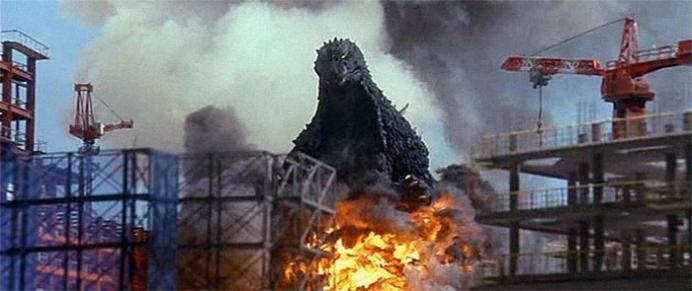

 Once again, what the film lacks in substance it makes up for in visual flair. The special effects, this time by Eichi Asada, are some of the film's greatest strengths and are an improvement on those seen in the previous movie, which in itself has some pretty nice ones overall. As per usual, you've got well-designed monster suits and props that are given even more life with cutting-edge animatronics, wonderfully crafted miniature buildings and sets, matting effects that show off the artists' continuously growing adeptness at doing so (some of the best in the series, in fact, especially when you see the Shobijin standing on a coffee table or something similar), exciting pyrotechnics, and, most encouraging of all, vastly improved CGI. While it's still not on the level of CGI seen in big-budget Hollywood movies, if you compare the computer-generated shots of Godzilla swimming underwater to those in past films like Godzilla 2000 and Godzilla vs. Megaguirus, you will notice a major difference. In addition, the other monsters, especially Mothra when she's zipping around like a kamikaze, are much more convincingly-rendered in CG than has been the case before, and the monsters' various beam weapons still look boffo. Besides the effects, I also have to mention that the film itself is nice to look at. It's very well shot, looking especially stunning during the scenes of Godzilla rampaging through Tokyo at sunset, and the monsters are lit very well so they come across as very convincing more often than not and less rubbery than they have before. One especially well-conceived scene is the opening where two fighter jets chase after what they think is a large, unidentified aircraft that's entered Japanese airspace but is eventually revealed to be Mothra. It's lit very darkly, with thick clouds used to obscure Mothra for the most of the scene to great effect, and even after she is revealed, they manage to keep her in the dark to the point where she is rather scary, believe it or not! So, there's no denying that the technical aspects of the movie are top notch but, as David Kalat notes, that should be irrelevant by this point.
Once again, what the film lacks in substance it makes up for in visual flair. The special effects, this time by Eichi Asada, are some of the film's greatest strengths and are an improvement on those seen in the previous movie, which in itself has some pretty nice ones overall. As per usual, you've got well-designed monster suits and props that are given even more life with cutting-edge animatronics, wonderfully crafted miniature buildings and sets, matting effects that show off the artists' continuously growing adeptness at doing so (some of the best in the series, in fact, especially when you see the Shobijin standing on a coffee table or something similar), exciting pyrotechnics, and, most encouraging of all, vastly improved CGI. While it's still not on the level of CGI seen in big-budget Hollywood movies, if you compare the computer-generated shots of Godzilla swimming underwater to those in past films like Godzilla 2000 and Godzilla vs. Megaguirus, you will notice a major difference. In addition, the other monsters, especially Mothra when she's zipping around like a kamikaze, are much more convincingly-rendered in CG than has been the case before, and the monsters' various beam weapons still look boffo. Besides the effects, I also have to mention that the film itself is nice to look at. It's very well shot, looking especially stunning during the scenes of Godzilla rampaging through Tokyo at sunset, and the monsters are lit very well so they come across as very convincing more often than not and less rubbery than they have before. One especially well-conceived scene is the opening where two fighter jets chase after what they think is a large, unidentified aircraft that's entered Japanese airspace but is eventually revealed to be Mothra. It's lit very darkly, with thick clouds used to obscure Mothra for the most of the scene to great effect, and even after she is revealed, they manage to keep her in the dark to the point where she is rather scary, believe it or not! So, there's no denying that the technical aspects of the movie are top notch but, as David Kalat notes, that should be irrelevant by this point. Like in the previous review, I feel I have to say something about the monster scenes before we get into the breakdown. Remember how last time there were only maybe three major sequences involving the monsters, while the rest of the movie was stuff involving the human characters? Well, Godzilla: Tokyo S.O.S. does something very different. While that's typically the way the formula has been since the beginning (three or four big monster sequences that have pockets of character stuff in-between), this film has Godzilla officially enter the story a little over the half-hour mark and from there, the last hour or so of the movie is one long battle, with Godzilla coming ashore and beginning his attack, Mothra being called in to fight him, Kiryu being launched to even the playing field, Mothra's larvae hatching and joining the fight, said larvae continuing the fight after their mother is killed while the humans race to fix the damaged Kiryu, and so on. There are instances of human stuff here and there but even then, it's still connected to what's going on so it's not exactly respite from this long sequence of monster action. What I'm getting at is that this film's pacing gets tedious very, very fast during that last hour. While I agree with those who complain that the 2014 movie didn't have nearly enough of Godzilla in it, this film has the exact opposite problem. It's great for the Big G and the other monsters to have a lot of screentime but you still need a break from them every once in a while; otherwise, it loses its impact. It's a fine balancing act in structuring these films, one that Tokyo S.O.S. fails at completely, resulting in overkill and fatigue. I'm not only saying this to inform you of one of the film's major problems but I'm also warning you to strap yourself in because this breakdown is going to be long.
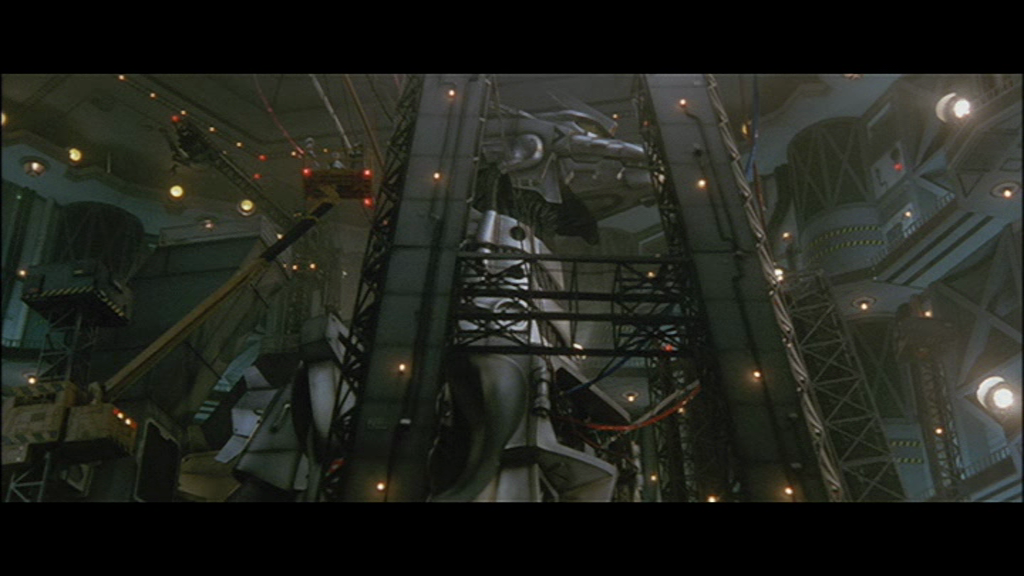 The film begins with Kiryu undergoing repairs and systems checks at the Hachioji Self-Defense Force Base, with everything appearing to be in order with the cyborg. After that, we cut to a long tracking shot of Godzilla sleeping at the bottom of the ocean, with a close-up of his eye opening ominously. Another cut to the Caroline Islands in Micronesia shows some jungle foliage that is disturbed by a huge gust of wind. After that, at the U.S. Pacific Air Force Base in Hawaii, an unidentified object is spotted on the radar. A cut back to Japan, with a title card telling us that the date is February 13th, 2004 (why do these recent films insist on being set the year after they're released?), specifically to the Narashino Base, shows us that the object has been picked up on radar there as well, heading for Japan. It enters the southern air-defense zone and heads north, prompting two F-15s to be dispatched from Hyakuri Air Base to intercept it. The two fighter jets lock their radar onto the target and move in to identify it. Heading up into the clouds, they're told that the target has reduced its speed to Mach 2 and they soon spot whatever it is just below the cloud cover beneath them. They make a wide turn up into the sky in order to come back around and tail the object, which has now entered Japanese airspace. They manage to get alongside it and warn it that it must change course. They, naturally, get no response but they do get a brief glimpse of an enormous wing breaking the clouds, although they can't identify it due to the darkness and the poor visibility. Maneuvering up above the object, they are allowed to fire a warning shot and lock onto the target in order to fire their sub-machine guns. The object, however, doesn't change course even after this assault, and one of the pilots begins to hear some eerie singing in his headset, which he reports back to base. The other pilot waves it off as just his partner's imagination and fires on the target again. This time, Mothra fully reveals herself, bursting up through the cloud cover in front of the F-15s and causing one to spiral downwards, while she descends back down in front of the other. As the one guy tries to get control of his plane, Mothra passes right by him as they're ordered to fire on her with their missiles. The guy gets control of his plane and locks onto Mothra, but when he fires his missile, it goes right past her and explodes into a fireball in mid-air. Mothra flies through it unharmed, leaving a big trail of her golden dust behind that blinds one of the pilots. Back at the base, they realize that they've lost the target on their radar screen and quickly learn that it wasn't shot down. A satellite image comes up to reveal a close-up of the unmistakable color patterns of Mothra's wing, leading into the main title coming up. (On a side-note, the film's Japanese title is actually Godzilla, Mothra and Mechagodzilla: Tokyo S.O.S. but I think that, after Godzilla, Mothra and King Ghidorah: Giant Monsters All-Out Attack, they didn't want to have sell a movie with a long, awkward title again and shortened it to just Godzilla: Tokyo S.O.S.)
The film begins with Kiryu undergoing repairs and systems checks at the Hachioji Self-Defense Force Base, with everything appearing to be in order with the cyborg. After that, we cut to a long tracking shot of Godzilla sleeping at the bottom of the ocean, with a close-up of his eye opening ominously. Another cut to the Caroline Islands in Micronesia shows some jungle foliage that is disturbed by a huge gust of wind. After that, at the U.S. Pacific Air Force Base in Hawaii, an unidentified object is spotted on the radar. A cut back to Japan, with a title card telling us that the date is February 13th, 2004 (why do these recent films insist on being set the year after they're released?), specifically to the Narashino Base, shows us that the object has been picked up on radar there as well, heading for Japan. It enters the southern air-defense zone and heads north, prompting two F-15s to be dispatched from Hyakuri Air Base to intercept it. The two fighter jets lock their radar onto the target and move in to identify it. Heading up into the clouds, they're told that the target has reduced its speed to Mach 2 and they soon spot whatever it is just below the cloud cover beneath them. They make a wide turn up into the sky in order to come back around and tail the object, which has now entered Japanese airspace. They manage to get alongside it and warn it that it must change course. They, naturally, get no response but they do get a brief glimpse of an enormous wing breaking the clouds, although they can't identify it due to the darkness and the poor visibility. Maneuvering up above the object, they are allowed to fire a warning shot and lock onto the target in order to fire their sub-machine guns. The object, however, doesn't change course even after this assault, and one of the pilots begins to hear some eerie singing in his headset, which he reports back to base. The other pilot waves it off as just his partner's imagination and fires on the target again. This time, Mothra fully reveals herself, bursting up through the cloud cover in front of the F-15s and causing one to spiral downwards, while she descends back down in front of the other. As the one guy tries to get control of his plane, Mothra passes right by him as they're ordered to fire on her with their missiles. The guy gets control of his plane and locks onto Mothra, but when he fires his missile, it goes right past her and explodes into a fireball in mid-air. Mothra flies through it unharmed, leaving a big trail of her golden dust behind that blinds one of the pilots. Back at the base, they realize that they've lost the target on their radar screen and quickly learn that it wasn't shot down. A satellite image comes up to reveal a close-up of the unmistakable color patterns of Mothra's wing, leading into the main title coming up. (On a side-note, the film's Japanese title is actually Godzilla, Mothra and Mechagodzilla: Tokyo S.O.S. but I think that, after Godzilla, Mothra and King Ghidorah: Giant Monsters All-Out Attack, they didn't want to have sell a movie with a long, awkward title again and shortened it to just Godzilla: Tokyo S.O.S.)

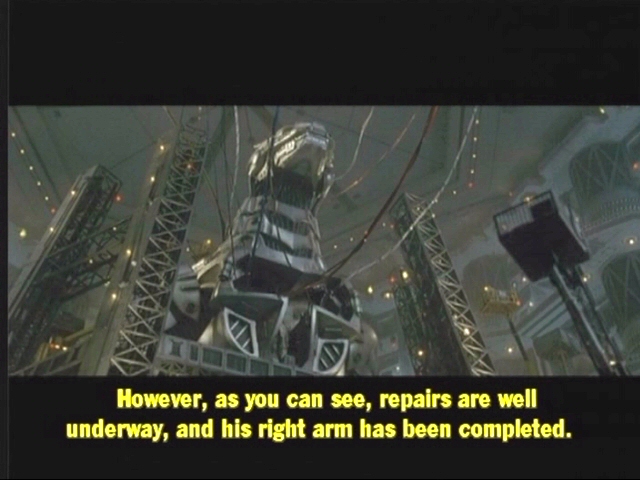
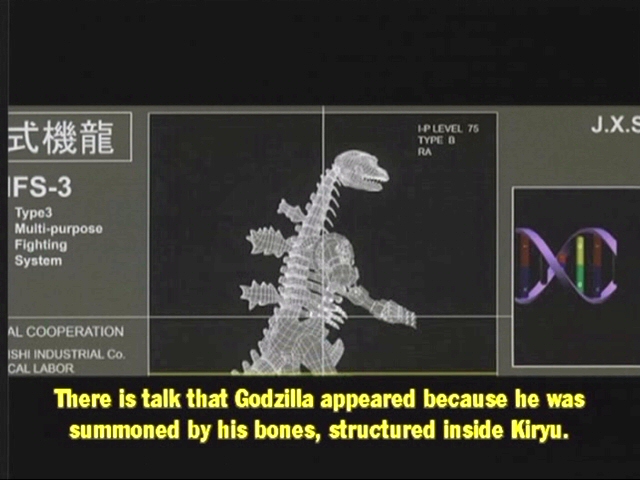
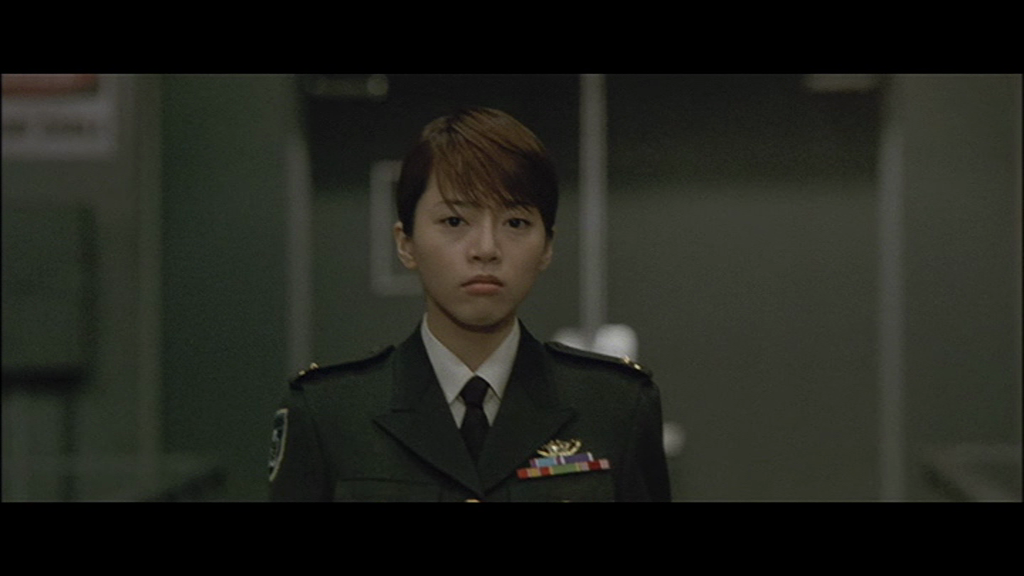 After the opening title, the film cuts to a snowy night in Karuizawa a month later, where Yoshito Chujo is visiting his uncle and nephew at the former's house. After being introduced to him and his obsession with machines, especially aircraft, we're introduced to the elderly Chujo as he's reading a book. When Shun attempts to show him a model F-1 that Yoshito has just finished, the place suddenly begins shaking and Chujo, thinking it's an earthquake, grabs his grandson to try to keep him safe. The shaking doesn't last long, however, and once it subsides, Chujo hears two tiny voices calling him. Looking down onto his coffee table, he's the Shobijin walk out from behind a small stack of books there and walk over his pen to the edge of the table. Shun is shocked by this that he drops his model plane but the Shobijin quickly use their telekinesis to stop it from hitting the floor and float it back up into his hands. Chujo then asks the Shobijin if he's dreaming, which they confirm he isn't, and that's when Yoshito comes downstairs and is shocked when he sees the two tiny girls, whom his uncle identifies as, "old acquaintances." After we learn that Chujo is indeed the same man from the original Mothra who meet two other faeries from their family on Infant Island back in 1961, the Shobijin say that they have a favor to ask of him. That's when they tell them that the Godzilla bones inside of Kiryu must be returned to the sea and that if they do, Mothra will protect Japan from Godzilla if he returns (which Yoshito doesn't exactly buy since he knows what Mothra did to Tokyo back in 1961), but if they don't, she will wage war on mankind. Upon hearing of Mothra's demand, they hear a loud screech outside and the three humans rush out there to see the enormous moth sitting atop a nearby hill, looking right at them. While Yoshito is noticeably leery of this, Chujo seems happy to see Mothra again, with Shun smiling as well. As Mothra sits there, steadily moving her swings up and down, Chujo looks back inside to see that the Shobijin are gone and turns around to see Mothra take off, sending a strong gust of wind and snow towards the house as she takes to the sky. After they watch her fly off into the distance, they head back inside, where Chujo finds a small amulet with Mothra's symbol that was left behind by the Shobijin. A cut to the Hachioji Base shows Dobashi answering questions about Mechagodzilla from a group of reporters, such as whether it will be ready to go if Godzilla attacks and when the Absolute Zero Cannon will be repaired. Dobashi insists that the machine is ready, although we learn from one of the technicians that's not exactly true. He's also asked about speculation that Godzilla is attracted to the bones within Mechagodzilla, although we don't hear what he ultimately says to that. Another scene with Chujo gives up some exposition on the events of the original Mothra, like how he first met the faeries and how they managed to calm Mothra down from the rampage she went on after they were kidnapped, and following a sendoff party for three soldiers who are leaving for additional training in America, where Yoshito talks to Azusa for the first time in a while and has his first bad encounter with Akiba, we get the solemn scene in its hangar where he ponders whether or not Kiryu is a product of man's mistake and also where Akane Yashiro says goodbye to Kiryu, saying that she thinks it doesn't want to fight anymore.
After the opening title, the film cuts to a snowy night in Karuizawa a month later, where Yoshito Chujo is visiting his uncle and nephew at the former's house. After being introduced to him and his obsession with machines, especially aircraft, we're introduced to the elderly Chujo as he's reading a book. When Shun attempts to show him a model F-1 that Yoshito has just finished, the place suddenly begins shaking and Chujo, thinking it's an earthquake, grabs his grandson to try to keep him safe. The shaking doesn't last long, however, and once it subsides, Chujo hears two tiny voices calling him. Looking down onto his coffee table, he's the Shobijin walk out from behind a small stack of books there and walk over his pen to the edge of the table. Shun is shocked by this that he drops his model plane but the Shobijin quickly use their telekinesis to stop it from hitting the floor and float it back up into his hands. Chujo then asks the Shobijin if he's dreaming, which they confirm he isn't, and that's when Yoshito comes downstairs and is shocked when he sees the two tiny girls, whom his uncle identifies as, "old acquaintances." After we learn that Chujo is indeed the same man from the original Mothra who meet two other faeries from their family on Infant Island back in 1961, the Shobijin say that they have a favor to ask of him. That's when they tell them that the Godzilla bones inside of Kiryu must be returned to the sea and that if they do, Mothra will protect Japan from Godzilla if he returns (which Yoshito doesn't exactly buy since he knows what Mothra did to Tokyo back in 1961), but if they don't, she will wage war on mankind. Upon hearing of Mothra's demand, they hear a loud screech outside and the three humans rush out there to see the enormous moth sitting atop a nearby hill, looking right at them. While Yoshito is noticeably leery of this, Chujo seems happy to see Mothra again, with Shun smiling as well. As Mothra sits there, steadily moving her swings up and down, Chujo looks back inside to see that the Shobijin are gone and turns around to see Mothra take off, sending a strong gust of wind and snow towards the house as she takes to the sky. After they watch her fly off into the distance, they head back inside, where Chujo finds a small amulet with Mothra's symbol that was left behind by the Shobijin. A cut to the Hachioji Base shows Dobashi answering questions about Mechagodzilla from a group of reporters, such as whether it will be ready to go if Godzilla attacks and when the Absolute Zero Cannon will be repaired. Dobashi insists that the machine is ready, although we learn from one of the technicians that's not exactly true. He's also asked about speculation that Godzilla is attracted to the bones within Mechagodzilla, although we don't hear what he ultimately says to that. Another scene with Chujo gives up some exposition on the events of the original Mothra, like how he first met the faeries and how they managed to calm Mothra down from the rampage she went on after they were kidnapped, and following a sendoff party for three soldiers who are leaving for additional training in America, where Yoshito talks to Azusa for the first time in a while and has his first bad encounter with Akiba, we get the solemn scene in its hangar where he ponders whether or not Kiryu is a product of man's mistake and also where Akane Yashiro says goodbye to Kiryu, saying that she thinks it doesn't want to fight anymore.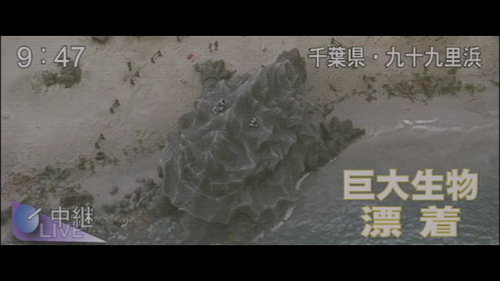

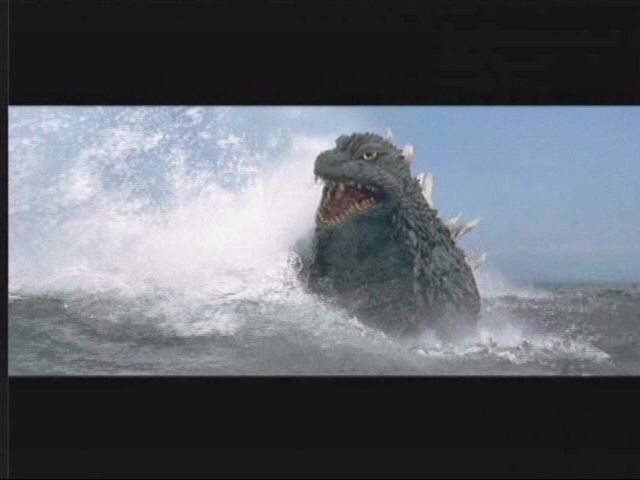
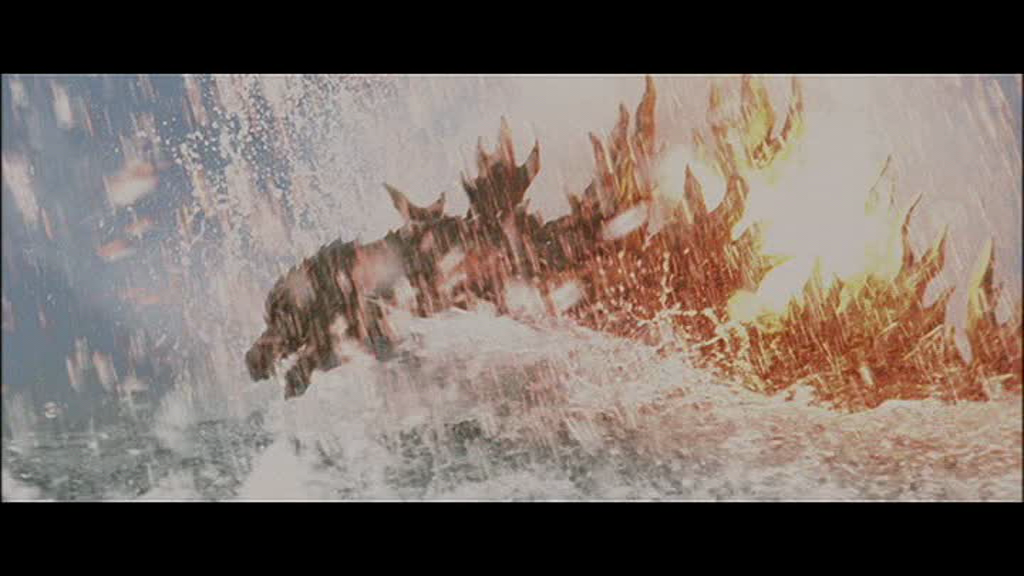
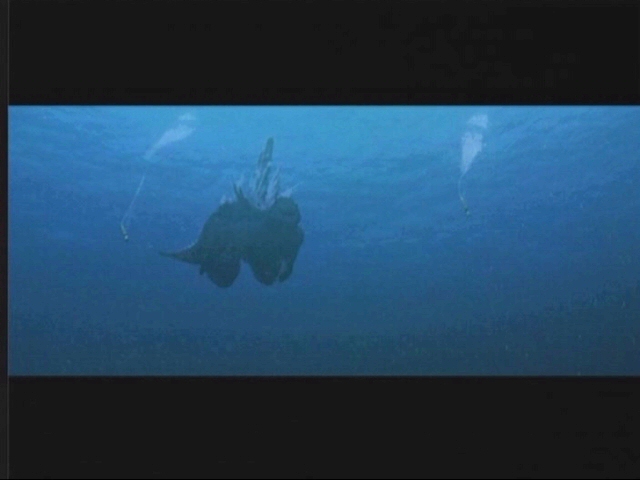 Following the scene where Chujo unsuccessfully tries to convince Prime Minister Igarashi to scrap the Kiryu project, we get the moment when the carcass of the gigantic, turtle-like Kamoebas is found on a Japanese beach. After a news team covering the story is told to leave due to security, the Kiryu Squad is informed by a scientist who examined the body that the large gash in its neck were caused by gigantic claws and that the perpetrator could only be Godzilla. The film then cuts to a U.S. submarine off the coast of Guam that picks up an unidentified object approaching them on the sonar. They try to outrun it but it proves to be fast for them and is on top of them in an instant. The sonar guy hears the sounds of huge heartbeats on his headphones right before Godzilla grabs ahold of the sub outside, tearing a large hole into it. He then grabs its rear and slashes into it as well before biting the top and squeezing the craft, causing a small explosion in its center. He then swims off with it down into the depths and crushes it, causing a couple of more explosions. Back in Japan, the technicians and Dobashi, upon hearing of the sub's disappearance and fearing that Godzilla may be heading back that way, try to find the best way to repair Kiryu quickly but find out that it's too expensive to repair the Absolute Zero Cannon and that the best systems check would take two weeks, which isn't acceptable. A few scenes pass, including a moment where Yoshito gets into a little squabble with Akiba and another one where he's summoned to a hearing by the higher ups in the company behind Kiryu's development, one of whom is Akiba's father, who tell him that if Mothra manages to defeat Godzilla, they will get rid of Kiryu, and then, we cut to a scene where an airplane spots a giant creature off the coast heading northwest. Said creature surfaces to reveal Godzilla's unmistakable spines and it isn't long before the navy moves in to attack. They hit Godzilla with some missiles and then fire on him with their cannons, prompting him to rise up out of the water and roar. He wades past one of the cruisers while continuing to take hits and quickly submerges beneath the waves again, forcing them to launch torpedoes into the water after him. Two hit him on either side and two more explode against the underside of his tail as he descends down into the depths, with an additional two following those. As Godzilla continues to head towards Tokyo despite the navy's attack, the Hyper Maser unit is loaded onto Kiryu in place of the Absolute Zero Cannon. Continuing to track him heading north-northwest, the JSDF decides to battle him in the still ruined area of Shinagawa to minimize the damage. Minister Igarashi and Dobashi arrive in the control room to hear that Godzilla just passed Uraga and the captain orders a defense line set up at Shinagawa.
Following the scene where Chujo unsuccessfully tries to convince Prime Minister Igarashi to scrap the Kiryu project, we get the moment when the carcass of the gigantic, turtle-like Kamoebas is found on a Japanese beach. After a news team covering the story is told to leave due to security, the Kiryu Squad is informed by a scientist who examined the body that the large gash in its neck were caused by gigantic claws and that the perpetrator could only be Godzilla. The film then cuts to a U.S. submarine off the coast of Guam that picks up an unidentified object approaching them on the sonar. They try to outrun it but it proves to be fast for them and is on top of them in an instant. The sonar guy hears the sounds of huge heartbeats on his headphones right before Godzilla grabs ahold of the sub outside, tearing a large hole into it. He then grabs its rear and slashes into it as well before biting the top and squeezing the craft, causing a small explosion in its center. He then swims off with it down into the depths and crushes it, causing a couple of more explosions. Back in Japan, the technicians and Dobashi, upon hearing of the sub's disappearance and fearing that Godzilla may be heading back that way, try to find the best way to repair Kiryu quickly but find out that it's too expensive to repair the Absolute Zero Cannon and that the best systems check would take two weeks, which isn't acceptable. A few scenes pass, including a moment where Yoshito gets into a little squabble with Akiba and another one where he's summoned to a hearing by the higher ups in the company behind Kiryu's development, one of whom is Akiba's father, who tell him that if Mothra manages to defeat Godzilla, they will get rid of Kiryu, and then, we cut to a scene where an airplane spots a giant creature off the coast heading northwest. Said creature surfaces to reveal Godzilla's unmistakable spines and it isn't long before the navy moves in to attack. They hit Godzilla with some missiles and then fire on him with their cannons, prompting him to rise up out of the water and roar. He wades past one of the cruisers while continuing to take hits and quickly submerges beneath the waves again, forcing them to launch torpedoes into the water after him. Two hit him on either side and two more explode against the underside of his tail as he descends down into the depths, with an additional two following those. As Godzilla continues to head towards Tokyo despite the navy's attack, the Hyper Maser unit is loaded onto Kiryu in place of the Absolute Zero Cannon. Continuing to track him heading north-northwest, the JSDF decides to battle him in the still ruined area of Shinagawa to minimize the damage. Minister Igarashi and Dobashi arrive in the control room to hear that Godzilla just passed Uraga and the captain orders a defense line set up at Shinagawa. 



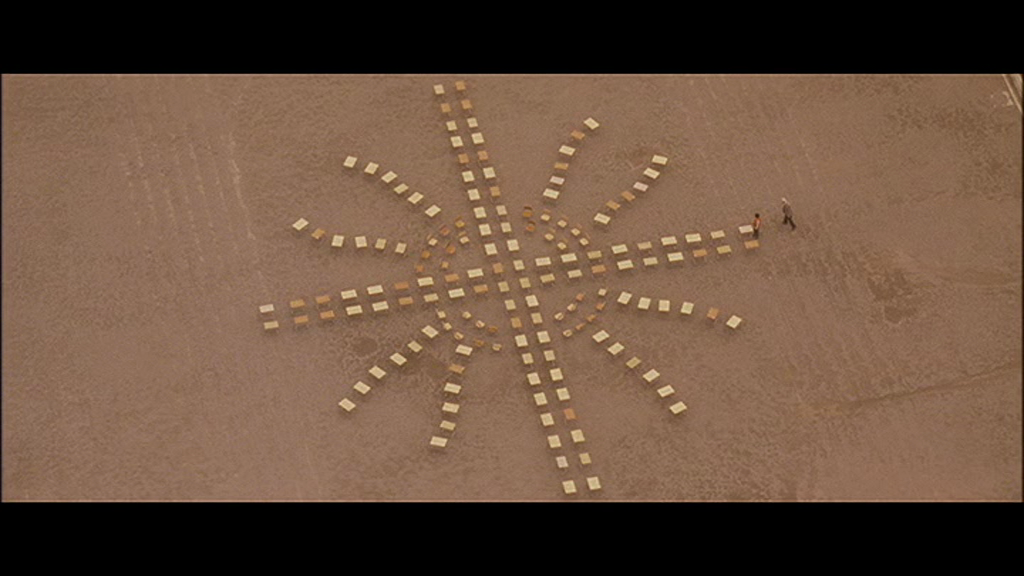
 The area around Shinagawa is evacuated as the troops move in, with military helicopters patrolling above Tokyo Bay. Tanks and maser units are set up at a construction site while the evacuation nearby continues (you see a temple being evacuated and some monks dropping some scrolls on the stairs in their hasty attempt to get out). At his house, Chujo is told by his daughter that Shun is missing and after checking his desk drawer to see that the small tablet given to him by the Shobijin is missing, he realizes that the kid is up to and runs out to try to find him. With the evacuation continuing, a squadron that's set up in the observatory at the top of Tokyo Tower hear over the radio that Godzilla has moved into the harbor and immediately afterward, one troop sees an explosion of water out there with his binoculars. Two more explosions follow, the result of Godzilla hitting underwater mines, and everyone prepares themselves as he moves on into the heart of the harbor. As two soldiers onshore watch, an enormous swell rises in the water and gives way to reveal Godzilla, who announces his arrival with a loud roar. As he begins wading through the harbor, those in the control room see the scar on his chest, which shows that this is indeed the same Godzilla they fought before rather than another of the species. Dobashi feels that this may mean that he's weakened and that they could have a chance in defeating him. The plan to lure him to Shinagawa is put into action, with an SSM in the city firing an enormous volley of missiles that screech through the sky above the city and converge on Godzilla in the harbor, exploding against him and the water around as he sits there. After some cutaways show Chujo trying to find Shun, who is carrying some chairs through the streets, tank units move into position while a maser cannon at the port shoots Godzilla in the chest. The tanks fire on him in addition to the maser, prompting him to wade towards them and fire back, completely decimating them in a big line of explosions. Passing by Shinagawa, Godzilla instead heads for Hachioji in the Minato District, with Igarashi realizing that he is indeed heading towards Kiryu. Godzilla comes ashore at another construction site, smashing everything in his path, including an overpass, while those at HQ finally get Kiryu ready. Meanwhile, Chujo continues scouring the streets for Shun and eventually spots him as he runs inside an elementary school. He tells Shun that they need to evacuate but the boy, as he carries a desk around back, says that he wants to try something first. As a news chopper films Godzilla while he continues his rampage, Chujo sees that Shun has used a bunch of chairs and desks to create an enormous version of Mothra's symbol in an attempt to call her. The news chopper spots this as well and while the reporter ponders what the symbol is supposed to mean, a huge shadow glides across the ground. They all look up to see that Mothra has arrived, coming around and zooming across the skyline, silhouetting herself against the sunset in one shot, before coming back and hovering herself above the elementary school as she looks down at Chujo and Shun. While they're elated, those at HQ, especially Dobashi, see her as another threat, especially if she and Godzilla attack together.
The area around Shinagawa is evacuated as the troops move in, with military helicopters patrolling above Tokyo Bay. Tanks and maser units are set up at a construction site while the evacuation nearby continues (you see a temple being evacuated and some monks dropping some scrolls on the stairs in their hasty attempt to get out). At his house, Chujo is told by his daughter that Shun is missing and after checking his desk drawer to see that the small tablet given to him by the Shobijin is missing, he realizes that the kid is up to and runs out to try to find him. With the evacuation continuing, a squadron that's set up in the observatory at the top of Tokyo Tower hear over the radio that Godzilla has moved into the harbor and immediately afterward, one troop sees an explosion of water out there with his binoculars. Two more explosions follow, the result of Godzilla hitting underwater mines, and everyone prepares themselves as he moves on into the heart of the harbor. As two soldiers onshore watch, an enormous swell rises in the water and gives way to reveal Godzilla, who announces his arrival with a loud roar. As he begins wading through the harbor, those in the control room see the scar on his chest, which shows that this is indeed the same Godzilla they fought before rather than another of the species. Dobashi feels that this may mean that he's weakened and that they could have a chance in defeating him. The plan to lure him to Shinagawa is put into action, with an SSM in the city firing an enormous volley of missiles that screech through the sky above the city and converge on Godzilla in the harbor, exploding against him and the water around as he sits there. After some cutaways show Chujo trying to find Shun, who is carrying some chairs through the streets, tank units move into position while a maser cannon at the port shoots Godzilla in the chest. The tanks fire on him in addition to the maser, prompting him to wade towards them and fire back, completely decimating them in a big line of explosions. Passing by Shinagawa, Godzilla instead heads for Hachioji in the Minato District, with Igarashi realizing that he is indeed heading towards Kiryu. Godzilla comes ashore at another construction site, smashing everything in his path, including an overpass, while those at HQ finally get Kiryu ready. Meanwhile, Chujo continues scouring the streets for Shun and eventually spots him as he runs inside an elementary school. He tells Shun that they need to evacuate but the boy, as he carries a desk around back, says that he wants to try something first. As a news chopper films Godzilla while he continues his rampage, Chujo sees that Shun has used a bunch of chairs and desks to create an enormous version of Mothra's symbol in an attempt to call her. The news chopper spots this as well and while the reporter ponders what the symbol is supposed to mean, a huge shadow glides across the ground. They all look up to see that Mothra has arrived, coming around and zooming across the skyline, silhouetting herself against the sunset in one shot, before coming back and hovering herself above the elementary school as she looks down at Chujo and Shun. While they're elated, those at HQ, especially Dobashi, see her as another threat, especially if she and Godzilla attack together. 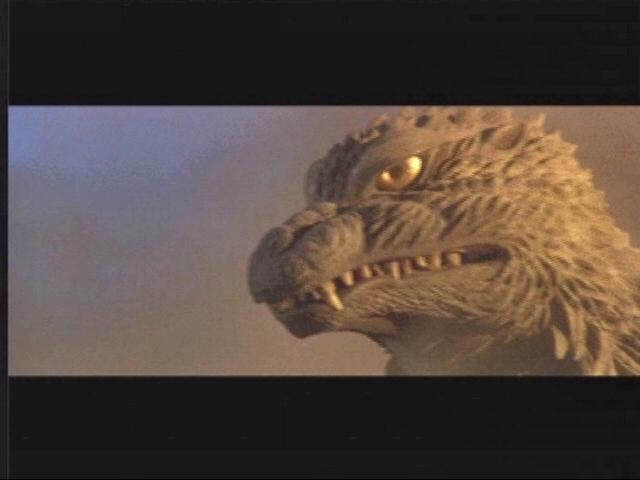

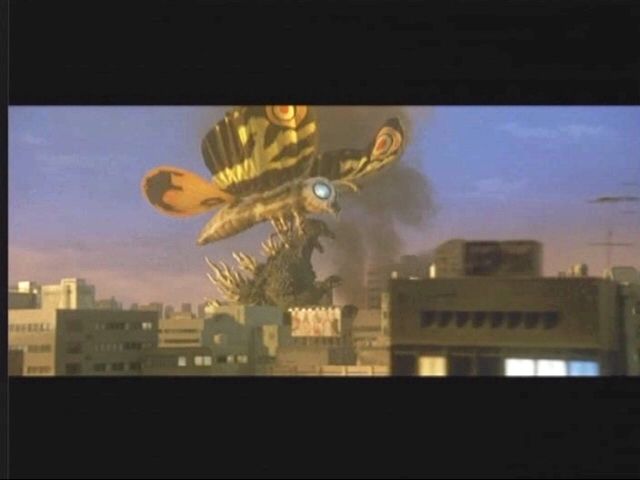
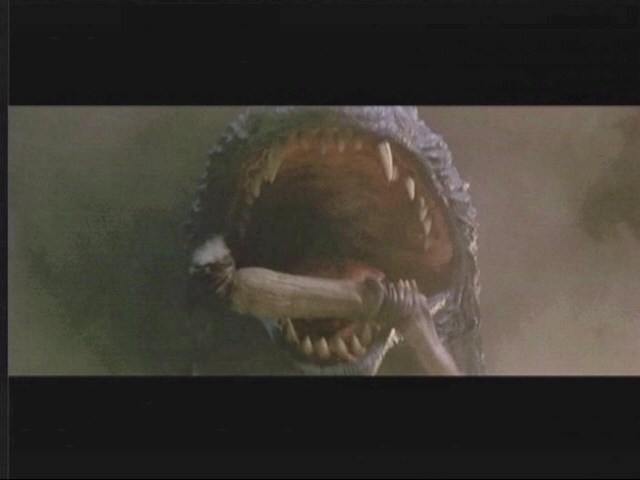
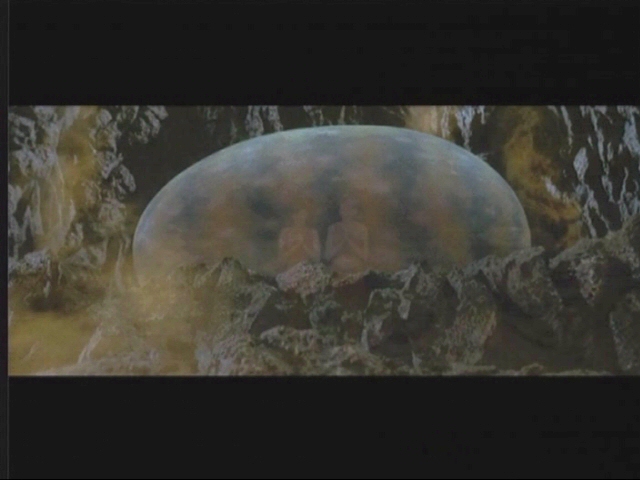


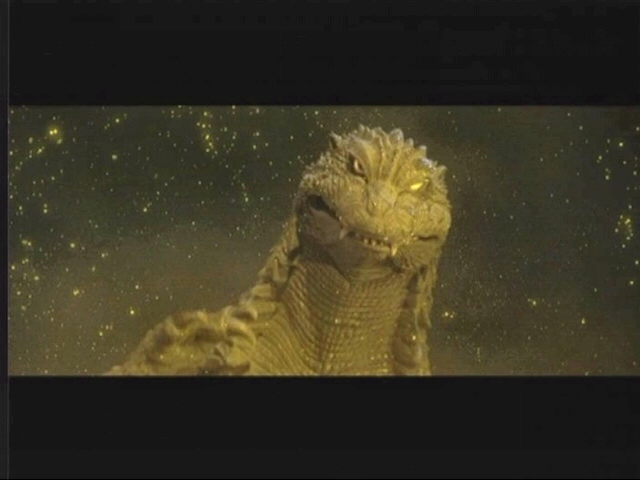 Godzilla is still stomping through the city, leaving big plumes of smoke and fire in his wake, when he looks up to see Mothra flying at him down the street. She tilts herself up at an angle to where she scrapes Godzilla on the head with her wing as she flies past him. As Godzilla turns around to face her, he looks up to see Mothra come back around and hover right above him. He snarls at her angrily and when she chirps at him, he roars a challenge, which is when she begins creating strong winds with her powerful wings, sending dusty air and objects like cars and trees flying backwards and eventually managing to push Godzilla down the street a little bit. When the wind abruptly subsides, Godzilla looks around to try to find Mothra, who uses the cloud of dust she created as cover to come up behind him, grab him on the back of the head, and force him down the street. She lets go and flies up into the air, while Godzilla is unable to stop himself due to the momentum and falls to the ground before skidding through a small overpass. While the battle rages on, the Kiryu maintenance crew is informed of Mothra's appearance and that the prime minister has put them on stand by. After they're dismissed, Yoshito is shown the news footage of his uncle and nephew at the site of the large symbol that attracted Mothra and asks if they're going to be okay. Togashi says that they haven't been able to pick them up yet. After some more talking, we cut back to the ongoing battle in the Minato District, where night has now fallen and Godzilla is struggling to get ahold of Mothra, who is hovering in front of him and scratching his face with her legs. He manages to grab one of the legs with his mouth and fling Mothra over into a nearby building. Godzilla roars, letting the severed limb drop from his mouth, as Mothra comes back at him and begins spreading her golden dust and scales all over Godzilla. This seems to weaken Godzilla and make him a little woozy, rocking back and forth like he's losing his balance. On a nearby street, Chujo and Shun notice this, with Chujo recognizing this move as a last ditch effort on Mothra's part, noting that she won't be able to stay airborne when her scales are gone. The film then cuts to Himago Island, one of the Bonin Islands, where Mothra has laid her egg and where the Shobijin currently are. In the crater of the inactive volcano there, the Shobijin sing their familiar song for Mothra, which when we get our first look at her egg. As they continue singing, we get back to the battle, where Mothra is continuing to pelt Godzilla with her scales and golden dust. Godzilla attempts to blast her but the cloud that's formed around him acts as a barrier and causes it to backfire in his face, creating a large explosion. Upon seeing this, the soldiers in Tokyo Tower realize that they'd best pull out. Meanwhile, Godzilla stands amidst the destruction caused by the backfire and opens his eyes to roar at Mothra as she comes back in for some more scales and dust. Godzilla is once again helpless to do anything and acts extremely woozy as the cloud surrounds him. At HQ, they realize that Mothra's wings have been injured and Igarashi decides that they need to help her. He gives the order to launch Kiryu and tells everyone to prepare themselves for the final battle. Kiryu is quickly prepared for launch and White Herons 1 & 2 are scrambled. As they Kiryu Squad heads out, Yoshito warns Akiba about how they couldn't complete the final check on the cyborg but Akiba arrogantly says that he's skilled enough to overcome any maintenance problems. Once he leaves, Yoshito tells Azusa to watch out for Akiba. With that, Kiryu is lifted to the surface on its launch pad, White Heron 2 attaches the transport cables to its sides, and it is then lifted off to the battle-site. After the launch, Yoshito asks the head of the maintenance crew about his uncle and nephew but he's told that they still don't have any news about their whereabouts. Yoshito is told that he's off-duty and the chief gives him his car to use to search for them.
Godzilla is still stomping through the city, leaving big plumes of smoke and fire in his wake, when he looks up to see Mothra flying at him down the street. She tilts herself up at an angle to where she scrapes Godzilla on the head with her wing as she flies past him. As Godzilla turns around to face her, he looks up to see Mothra come back around and hover right above him. He snarls at her angrily and when she chirps at him, he roars a challenge, which is when she begins creating strong winds with her powerful wings, sending dusty air and objects like cars and trees flying backwards and eventually managing to push Godzilla down the street a little bit. When the wind abruptly subsides, Godzilla looks around to try to find Mothra, who uses the cloud of dust she created as cover to come up behind him, grab him on the back of the head, and force him down the street. She lets go and flies up into the air, while Godzilla is unable to stop himself due to the momentum and falls to the ground before skidding through a small overpass. While the battle rages on, the Kiryu maintenance crew is informed of Mothra's appearance and that the prime minister has put them on stand by. After they're dismissed, Yoshito is shown the news footage of his uncle and nephew at the site of the large symbol that attracted Mothra and asks if they're going to be okay. Togashi says that they haven't been able to pick them up yet. After some more talking, we cut back to the ongoing battle in the Minato District, where night has now fallen and Godzilla is struggling to get ahold of Mothra, who is hovering in front of him and scratching his face with her legs. He manages to grab one of the legs with his mouth and fling Mothra over into a nearby building. Godzilla roars, letting the severed limb drop from his mouth, as Mothra comes back at him and begins spreading her golden dust and scales all over Godzilla. This seems to weaken Godzilla and make him a little woozy, rocking back and forth like he's losing his balance. On a nearby street, Chujo and Shun notice this, with Chujo recognizing this move as a last ditch effort on Mothra's part, noting that she won't be able to stay airborne when her scales are gone. The film then cuts to Himago Island, one of the Bonin Islands, where Mothra has laid her egg and where the Shobijin currently are. In the crater of the inactive volcano there, the Shobijin sing their familiar song for Mothra, which when we get our first look at her egg. As they continue singing, we get back to the battle, where Mothra is continuing to pelt Godzilla with her scales and golden dust. Godzilla attempts to blast her but the cloud that's formed around him acts as a barrier and causes it to backfire in his face, creating a large explosion. Upon seeing this, the soldiers in Tokyo Tower realize that they'd best pull out. Meanwhile, Godzilla stands amidst the destruction caused by the backfire and opens his eyes to roar at Mothra as she comes back in for some more scales and dust. Godzilla is once again helpless to do anything and acts extremely woozy as the cloud surrounds him. At HQ, they realize that Mothra's wings have been injured and Igarashi decides that they need to help her. He gives the order to launch Kiryu and tells everyone to prepare themselves for the final battle. Kiryu is quickly prepared for launch and White Herons 1 & 2 are scrambled. As they Kiryu Squad heads out, Yoshito warns Akiba about how they couldn't complete the final check on the cyborg but Akiba arrogantly says that he's skilled enough to overcome any maintenance problems. Once he leaves, Yoshito tells Azusa to watch out for Akiba. With that, Kiryu is lifted to the surface on its launch pad, White Heron 2 attaches the transport cables to its sides, and it is then lifted off to the battle-site. After the launch, Yoshito asks the head of the maintenance crew about his uncle and nephew but he's told that they still don't have any news about their whereabouts. Yoshito is told that he's off-duty and the chief gives him his car to use to search for them. 


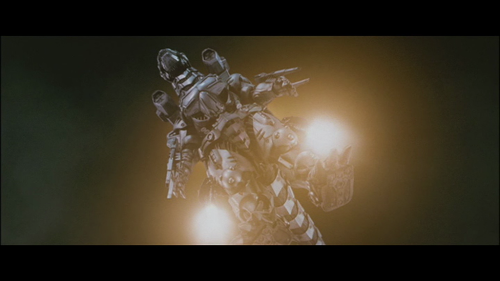
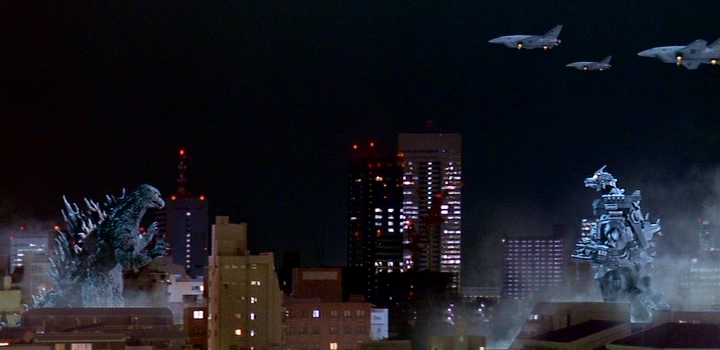
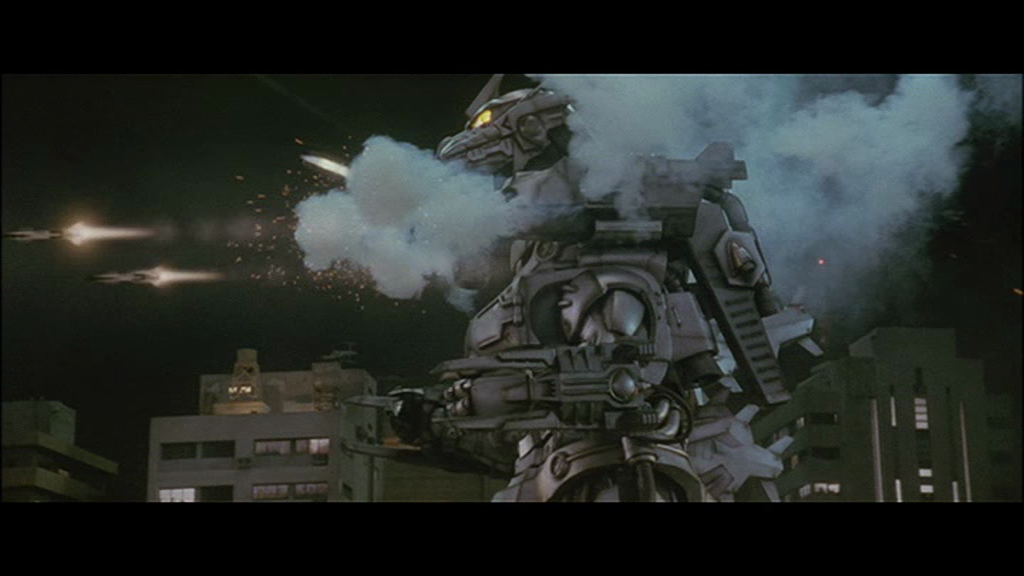
 Back in Minato, Mothra is still bombarding Godzilla, circling around him as she does so. Godzilla snarls at her and his spines begin to flash again but when he shoots, Mothra zooms out of the way and the atomic blast blows up Tokyo Tower instead in a massive explosion. The top section of the burning tower falls over and heads right for Chujo and Shun in an alleyway. It smashes onto the tops of the buildings on either side of them and sends big chunks of rock and concrete their way. Chujo uses his body to shield Shun from rubble. Godzilla and Mothra, meanwhile, are facing off on either side of what's left of the tower, with Godzilla firing again and this time managing to get the underside of Mothra's right wing. She falls to the ground on her back and Godzilla takes the opportunity to go in for the kill. Mothra tries to get up off of the ground but her efforts are in vain as Godzilla stomps towards her. But then, he's fired upon from above by Kiryu as it enters the battle-zone and is brought in for a landing. As the transportation cables are released and Kiryu uses its boosters to come down softly, Godzilla snarls upon seeing this all too familiar opponent again. Kiryu lands on the other side of the street from Godzilla and Akiba immediately goes into action, firing a volley of missiles and rockets at Godzilla as Kiryu stomps down the street towards him. Godzilla does recoil from this onslaught and backs up a bit as Akiba increases the attack, adding the dual-laser cannons as well. Godzilla bristles and groans under this barrage as well. After a brief moment where Yoshito arrives at the site of the symbol but only finds his uncle's tablet instead, we cut back to see Kiryu continuing to fire upon Godzilla, forcing him backwards. When Godzilla attempts to push back against the barrage, Kiryu fires its maser cannon, hitting him right on the scar on his chest and causing him to screech in pain. Godzilla then shoots back but Kiryu evades the blast, ducking behind a building, and then sends a volley of missiles at him from back there. Godzilla manages to blow up a few of the missiles but isn't quick enough to stop the rest of them from hitting their mark, with those that rain down on him from above really causing him problems. He then shoots right through the building and hits Kiryu, blasting it backwards into a building behind it and causing it to fall through it. Akiba struggles to get Kiryu back up as Godzilla plows through what's left of the building it was using as a shield and approaches the downed robot, charging up for another blast. Just as he's about to shoot, Mothra zooms past him and somehow causes him to fall, although he still manages to fire and clip her left wing, causing her to crash near the Diet Building. Mothra tries to get back up but is severely weakened by the attack. That's when, back on Himago Island, the Shobijin realize that Mothra's egg is beginning to hatch. They're astonished when not one but two larvae emerge from the egg, prompting them to get down on their knees on pray as the two caterpillars depart. Back in Tokyo, Yoshito continues looking for his uncle and nephew when the tablet inexplicably points him in the right direction. At the same time, Mothra's larvae are spotted swimming for Tokyo, with Igarashi realizing that Mothra laid her egg so her children could carry on the battle for her in case something went wrong.
Back in Minato, Mothra is still bombarding Godzilla, circling around him as she does so. Godzilla snarls at her and his spines begin to flash again but when he shoots, Mothra zooms out of the way and the atomic blast blows up Tokyo Tower instead in a massive explosion. The top section of the burning tower falls over and heads right for Chujo and Shun in an alleyway. It smashes onto the tops of the buildings on either side of them and sends big chunks of rock and concrete their way. Chujo uses his body to shield Shun from rubble. Godzilla and Mothra, meanwhile, are facing off on either side of what's left of the tower, with Godzilla firing again and this time managing to get the underside of Mothra's right wing. She falls to the ground on her back and Godzilla takes the opportunity to go in for the kill. Mothra tries to get up off of the ground but her efforts are in vain as Godzilla stomps towards her. But then, he's fired upon from above by Kiryu as it enters the battle-zone and is brought in for a landing. As the transportation cables are released and Kiryu uses its boosters to come down softly, Godzilla snarls upon seeing this all too familiar opponent again. Kiryu lands on the other side of the street from Godzilla and Akiba immediately goes into action, firing a volley of missiles and rockets at Godzilla as Kiryu stomps down the street towards him. Godzilla does recoil from this onslaught and backs up a bit as Akiba increases the attack, adding the dual-laser cannons as well. Godzilla bristles and groans under this barrage as well. After a brief moment where Yoshito arrives at the site of the symbol but only finds his uncle's tablet instead, we cut back to see Kiryu continuing to fire upon Godzilla, forcing him backwards. When Godzilla attempts to push back against the barrage, Kiryu fires its maser cannon, hitting him right on the scar on his chest and causing him to screech in pain. Godzilla then shoots back but Kiryu evades the blast, ducking behind a building, and then sends a volley of missiles at him from back there. Godzilla manages to blow up a few of the missiles but isn't quick enough to stop the rest of them from hitting their mark, with those that rain down on him from above really causing him problems. He then shoots right through the building and hits Kiryu, blasting it backwards into a building behind it and causing it to fall through it. Akiba struggles to get Kiryu back up as Godzilla plows through what's left of the building it was using as a shield and approaches the downed robot, charging up for another blast. Just as he's about to shoot, Mothra zooms past him and somehow causes him to fall, although he still manages to fire and clip her left wing, causing her to crash near the Diet Building. Mothra tries to get back up but is severely weakened by the attack. That's when, back on Himago Island, the Shobijin realize that Mothra's egg is beginning to hatch. They're astonished when not one but two larvae emerge from the egg, prompting them to get down on their knees on pray as the two caterpillars depart. Back in Tokyo, Yoshito continues looking for his uncle and nephew when the tablet inexplicably points him in the right direction. At the same time, Mothra's larvae are spotted swimming for Tokyo, with Igarashi realizing that Mothra laid her egg so her children could carry on the battle for her in case something went wrong. 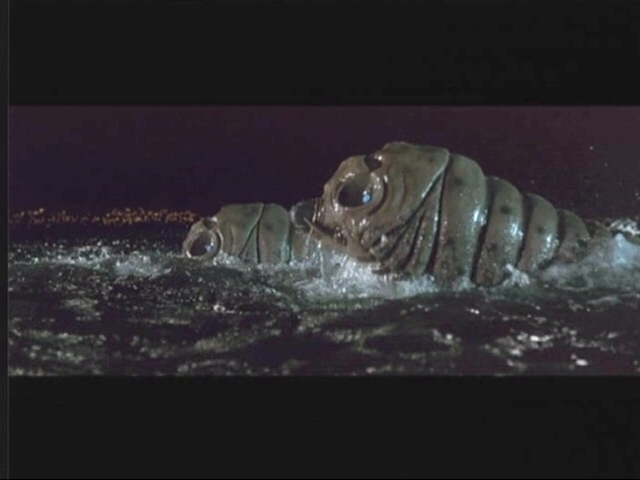


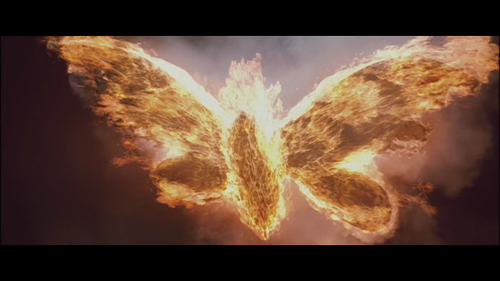
 As the larvae swim to Tokyo, the battle resumes with Kiryu getting to its feet and Akiba dispensing with a damaged arm unit on its right. Godzilla stomps toward Kiryu while Akiba fires the entire right rocket launcher directly at him. Godzilla shoots at the launcher but, even though he manages to blow it up, the other one is quickly launched. It slams and locks itself into Godzilla's gut, with Akiba then detonating it. Godzilla actually collapses face-first into the ground from this. Yoshito, meanwhile, finally finds his uncle and nephew as they lie next to the pile of rubble that almost crushed them. Although hurt, they are alive. Back at the battle, Godzilla gets back on his feet as Kiryu stomps towards him and whacks him on the side with its tail, sending him careening into a building and getting buried beneath the rubble. Godzilla gets back up, roaring angrily, and charges at Kiryu again, but the robot bends down when Godzilla reaches it and flips him over its shoulder, with Godzilla doing a somersault in the air before landing roughly on his back. Akiba turns Kiryu around and has it walk towards Godzilla but the robot is too slow to make it before Godzilla regains consciousness and the monster trips it up with his tail, causing it to fall right towards him. Godzilla then follows that up with a blast to the face that sends Kiryu crashing down onto a small building. The Mothra larvae surface in Tokyo Bay and quickly make it to the shore, while Akiba finds himself unable to operate Kiryu. The caterpillars crawl their way to battle site as Godzilla gets back on his feet and, with a roar, begins approaching his downed opponent. Just as he's right on top of Kiryu, white silk begins raining down on him, courtesy of one of the larvae peaking around the corner of a building behind him. Godzilla turns around to try to find the source of the silk, prompting the larva to scuttle backward out of sight. Godzilla appears totally oblivious and turns away, but when the larva crawls back around the corner to spray him, Godzilla whips around and fires at her, sending her flying backward. She lands right near her sister and downed mother, with her sibling immediately crawling over to her to make sure she's alright. The two of them squeak at each other when Mothra calls them back over to her. The larvae crawl up to their mother and the three of them chirp at each other for a little. Godzilla, however, is not amused by this and begins charging up behind Mothra. Realizing what's about to happen, Mothra uses her last bit of strength to lift up into the air and shield her babies from the atomic blast. She's almost immediately engulfed in flames by the beam and blows up in a massive explosion. The larvae, upon seeing their mother die in front of them, screech for her and their eyes turn red.
As the larvae swim to Tokyo, the battle resumes with Kiryu getting to its feet and Akiba dispensing with a damaged arm unit on its right. Godzilla stomps toward Kiryu while Akiba fires the entire right rocket launcher directly at him. Godzilla shoots at the launcher but, even though he manages to blow it up, the other one is quickly launched. It slams and locks itself into Godzilla's gut, with Akiba then detonating it. Godzilla actually collapses face-first into the ground from this. Yoshito, meanwhile, finally finds his uncle and nephew as they lie next to the pile of rubble that almost crushed them. Although hurt, they are alive. Back at the battle, Godzilla gets back on his feet as Kiryu stomps towards him and whacks him on the side with its tail, sending him careening into a building and getting buried beneath the rubble. Godzilla gets back up, roaring angrily, and charges at Kiryu again, but the robot bends down when Godzilla reaches it and flips him over its shoulder, with Godzilla doing a somersault in the air before landing roughly on his back. Akiba turns Kiryu around and has it walk towards Godzilla but the robot is too slow to make it before Godzilla regains consciousness and the monster trips it up with his tail, causing it to fall right towards him. Godzilla then follows that up with a blast to the face that sends Kiryu crashing down onto a small building. The Mothra larvae surface in Tokyo Bay and quickly make it to the shore, while Akiba finds himself unable to operate Kiryu. The caterpillars crawl their way to battle site as Godzilla gets back on his feet and, with a roar, begins approaching his downed opponent. Just as he's right on top of Kiryu, white silk begins raining down on him, courtesy of one of the larvae peaking around the corner of a building behind him. Godzilla turns around to try to find the source of the silk, prompting the larva to scuttle backward out of sight. Godzilla appears totally oblivious and turns away, but when the larva crawls back around the corner to spray him, Godzilla whips around and fires at her, sending her flying backward. She lands right near her sister and downed mother, with her sibling immediately crawling over to her to make sure she's alright. The two of them squeak at each other when Mothra calls them back over to her. The larvae crawl up to their mother and the three of them chirp at each other for a little. Godzilla, however, is not amused by this and begins charging up behind Mothra. Realizing what's about to happen, Mothra uses her last bit of strength to lift up into the air and shield her babies from the atomic blast. She's almost immediately engulfed in flames by the beam and blows up in a massive explosion. The larvae, upon seeing their mother die in front of them, screech for her and their eyes turn red.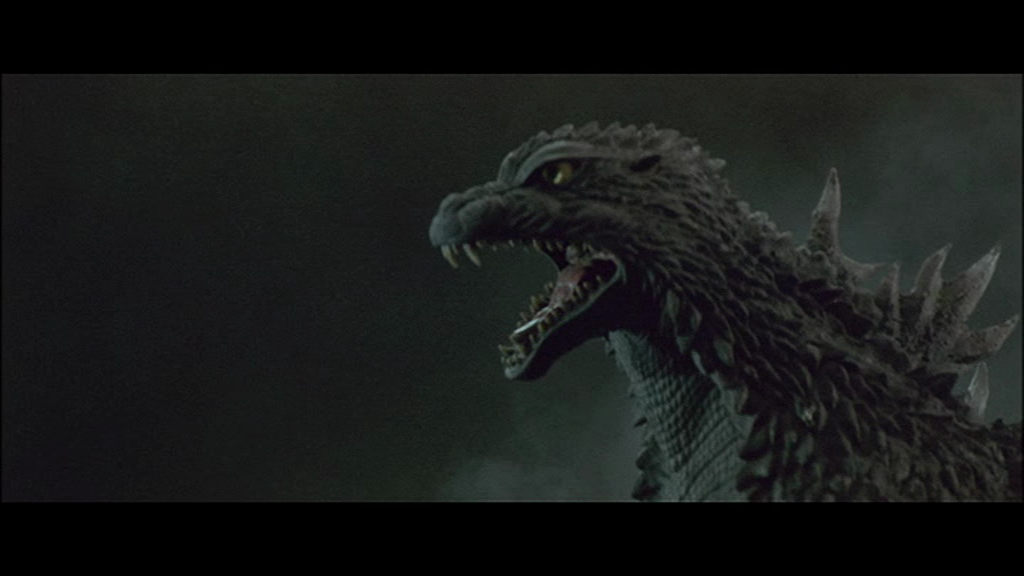
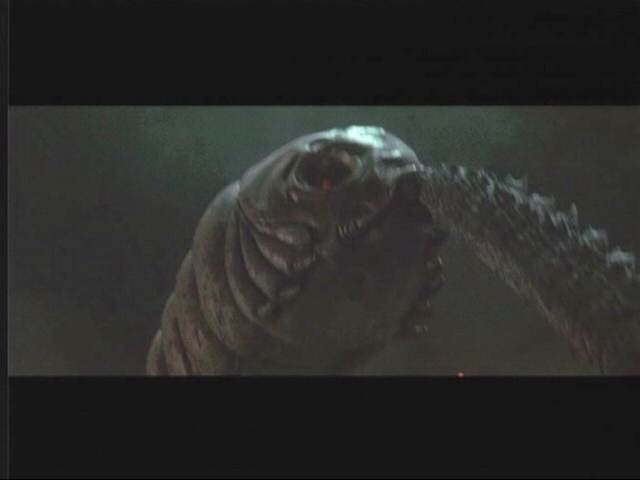 Those at HQ debate about how to fix the damage to Kiryu when Yoshito, who's at a military station at Habiya Park where he took his uncle and nephew, chimes in over the radio, offering his services to fix it. While there's a little bit of fuss over it at first since he's not a qualified pilot, they realize that they need his help and allow him to do so. The White Herons are ordered to try to lure Godzilla away from Kiryu (where have we seen this before?) while Yoshito suits up, gets the necessary equipment, and meets up with those will escort him to the site. After bidding farewell to Shun and Chujo, promising that he'll repair Kiryu, Yoshito is driven off by the escort. While he heads towards Kiryu, White Heron Four flies in to lure Godzilla away from the area by diving at and firing on him from the side. He turns around to face the aircraft as it zips by behind him and is then tagged from behind by another one. Meanwhile, Yoshito's escort hits a roadblock when they come across an impassable pile of rubble in the street. The soldiers try to find a detour but Yoshito, knowing that he can't afford to waste time, spots an abandoned motorcycle and uses it to drive down into the subway. He makes it down to the tracks and heads down the tunnel, while Godzilla continues to tangle with the White Herons nearby. While he's distracted with the aircraft, one of the Mothra larvae takes the opportunity to crawl up behind him and rear up and launch herself at his thrashing tail. She misses and slams down onto the concrete, but she quickly backs up and tries again. This time, she manages to latch onto the tip of his tail, causing Godzilla to screech in pain. Yoshito continues driving through the subway tunnels, noting that the place is shaking from the battle going on up above, while Godzilla thrashes his tail up and down, trying to wrench the larva loose. This causes a small cave-in down below, which makes Yoshito skid and crash. While unhurt, he realizes that he's lost the case containing the equipment and scrambles amidst the rubble, searching for it. As he does so, he spots the Shobijin on alcove nearby, but tells them that he has no time to talk and that he has to repair Kiryu or all hope is lost for Japan. The Shobijin, understanding his plight, use their telekinetic powers to raise the case out from under the rubble that buried it and then motion Yoshito to follow them down a small tunnel that forces him to hunch over in order to walk through it. He then climbs up a ladder on the wall ahead and comes up through a sewer grate, right in front of Kiryu. He informs everyone that he's reached the robot and tells them that he's going inside to begin the repairs. Everyone then continues attempting to keep Godzilla away from the area, with one of the White Herons firing on him and maser cannon behind him following that up by zapping him on the right shoulder and then the chest when he turns around.
Those at HQ debate about how to fix the damage to Kiryu when Yoshito, who's at a military station at Habiya Park where he took his uncle and nephew, chimes in over the radio, offering his services to fix it. While there's a little bit of fuss over it at first since he's not a qualified pilot, they realize that they need his help and allow him to do so. The White Herons are ordered to try to lure Godzilla away from Kiryu (where have we seen this before?) while Yoshito suits up, gets the necessary equipment, and meets up with those will escort him to the site. After bidding farewell to Shun and Chujo, promising that he'll repair Kiryu, Yoshito is driven off by the escort. While he heads towards Kiryu, White Heron Four flies in to lure Godzilla away from the area by diving at and firing on him from the side. He turns around to face the aircraft as it zips by behind him and is then tagged from behind by another one. Meanwhile, Yoshito's escort hits a roadblock when they come across an impassable pile of rubble in the street. The soldiers try to find a detour but Yoshito, knowing that he can't afford to waste time, spots an abandoned motorcycle and uses it to drive down into the subway. He makes it down to the tracks and heads down the tunnel, while Godzilla continues to tangle with the White Herons nearby. While he's distracted with the aircraft, one of the Mothra larvae takes the opportunity to crawl up behind him and rear up and launch herself at his thrashing tail. She misses and slams down onto the concrete, but she quickly backs up and tries again. This time, she manages to latch onto the tip of his tail, causing Godzilla to screech in pain. Yoshito continues driving through the subway tunnels, noting that the place is shaking from the battle going on up above, while Godzilla thrashes his tail up and down, trying to wrench the larva loose. This causes a small cave-in down below, which makes Yoshito skid and crash. While unhurt, he realizes that he's lost the case containing the equipment and scrambles amidst the rubble, searching for it. As he does so, he spots the Shobijin on alcove nearby, but tells them that he has no time to talk and that he has to repair Kiryu or all hope is lost for Japan. The Shobijin, understanding his plight, use their telekinetic powers to raise the case out from under the rubble that buried it and then motion Yoshito to follow them down a small tunnel that forces him to hunch over in order to walk through it. He then climbs up a ladder on the wall ahead and comes up through a sewer grate, right in front of Kiryu. He informs everyone that he's reached the robot and tells them that he's going inside to begin the repairs. Everyone then continues attempting to keep Godzilla away from the area, with one of the White Herons firing on him and maser cannon behind him following that up by zapping him on the right shoulder and then the chest when he turns around.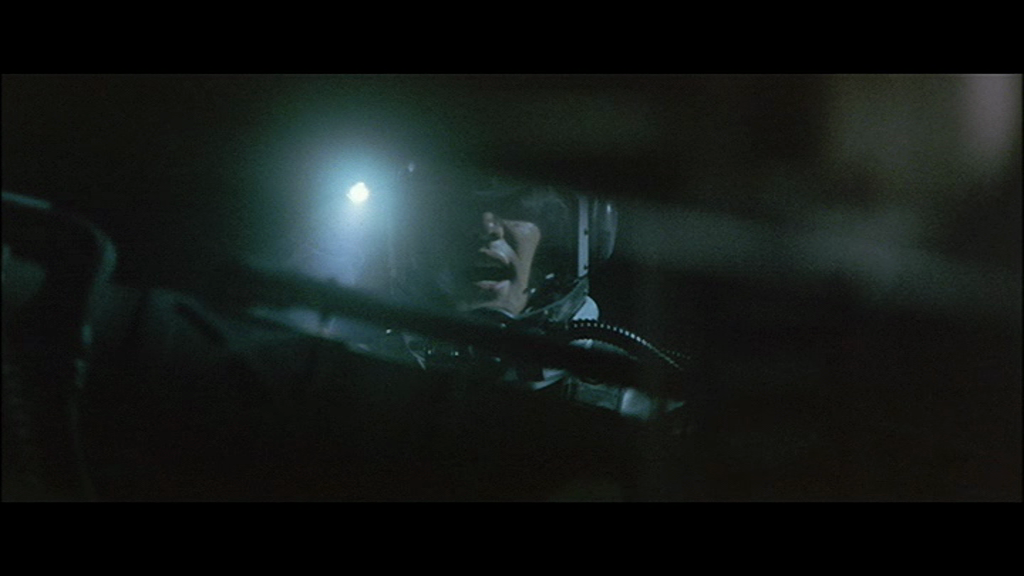

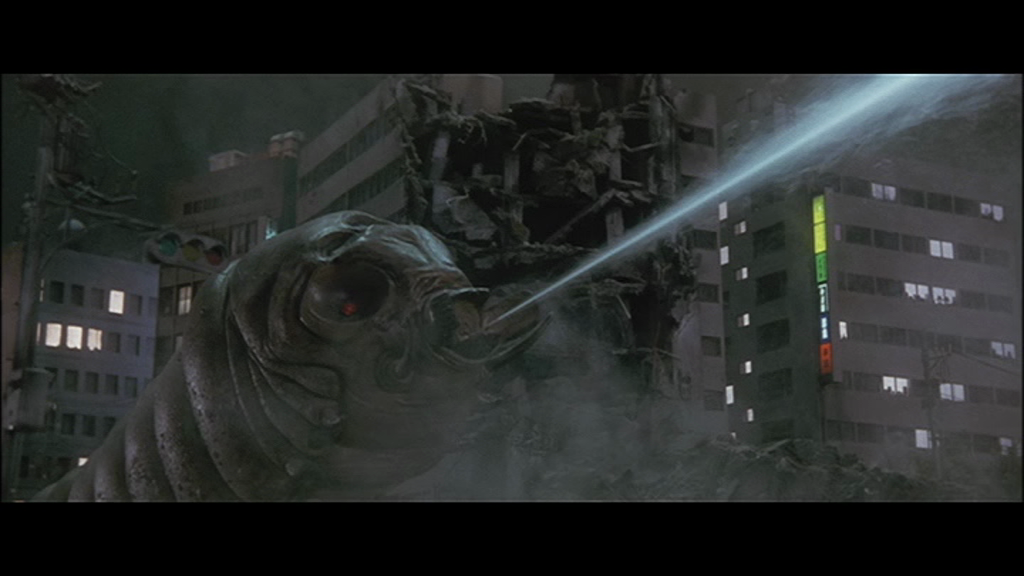
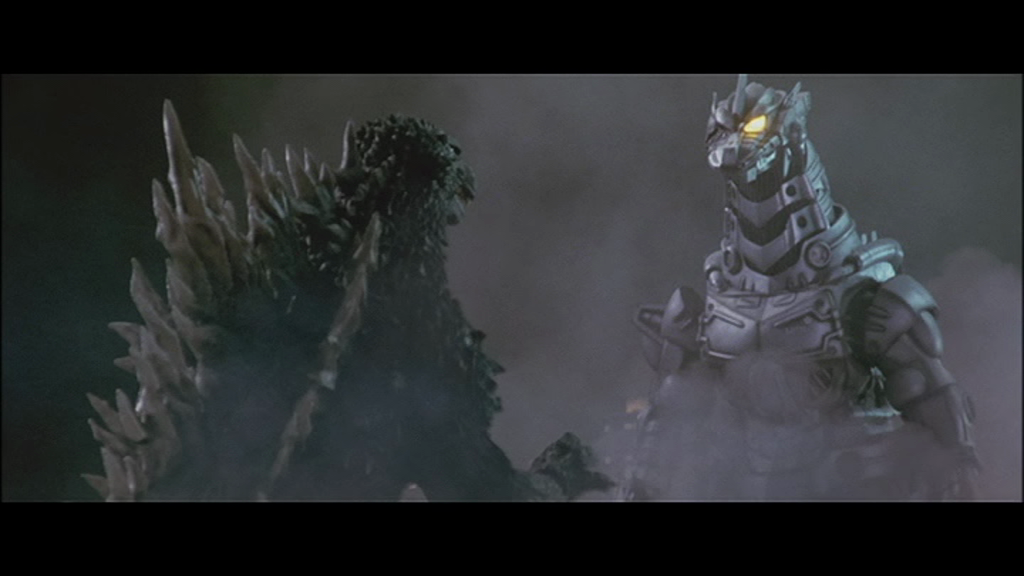



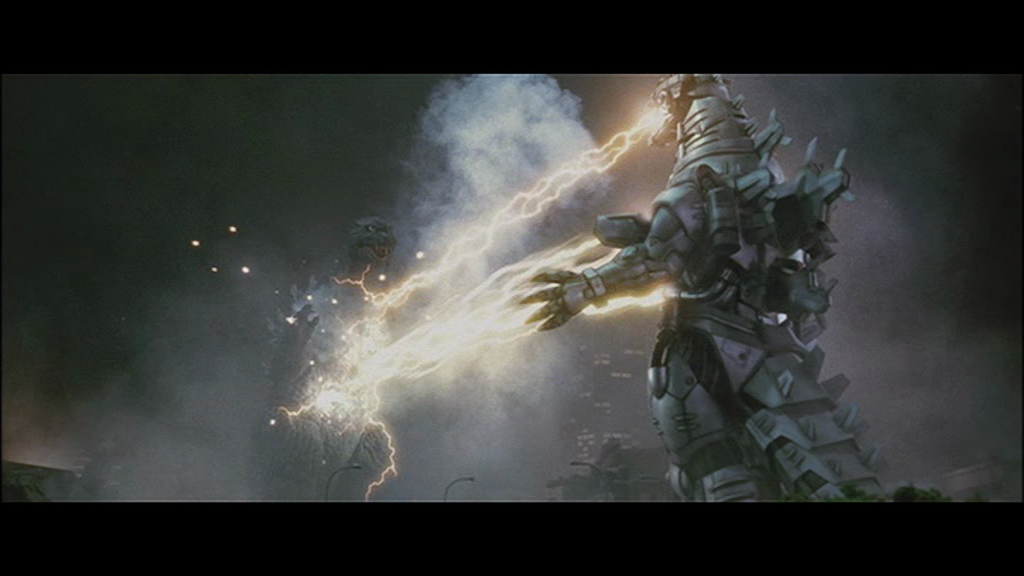 As Godzilla blows up the maser cannon, Yoshito surveys the damage that Kiryu has sustained and reports it back to maintenance. Everyone there attempts to find the appropriate circuit diagrams for Kiryu while Yoshito sees that the control cable has been destroyed and that it needs to be bypassed quickly. A way to do so is found and relayed back to Yoshito, who manages to get it connected and begins making his way to a Maintenance Pod in order to get inside of Kiryu. The first one he comes across is damaged, forcing him to go for the next one, which he manages to open and enter. Godzilla, meanwhile, is getting sprayed by the Mothra larvae from both sides as Yoshito, after some trouble, gets a connection going inside Kiryu. Godzilla fires at the two larvae, who crawl away, but the beam hits Kiryu, violently shaking the inside and forcing Yoshito to hold on to keep his balance. When Togashi asks if he's okay, Yoshito says that he's fine and tells him that Kiryu is fixed. He's then told to get out of the maintenance booth so they can finish the fight with Godzilla. Yoshito climbs his way back up to the door to the booth but it doesn't open when he presses the button. He presses it again and when that doesn't work, he releases a nearby pressure valve and tries to force it open but still no dice. A shot outside shows that the door was damaged by Godzilla's atomic blast and is now unable to open. While the larvae chase after Godzilla as he heads toward the Diet Building, Yoshito, not wanting to delay the battle any further, lies and tells Azusa over the radio that he's made out of Kiryu and that they can resume control. Seeing what Godzilla is up to, Togashi orders Akiba to resume control of Kiryu, which he does. Kiryu lifts itself back up with its front boosters and hovers up into the air as Godzilla stomps past the Diet Building, with one of the larvae coming to rest on the other side of it. Seeing her peak around the corner, Godzilla fires but only manages to take off the side of the wing as a result. He then looks up and watches as Kiryu sets down right in front of him. The two then square off with the capitol to the side of them, framed in-between them in one shot. Yoshito attempts to crawl to the control room in the maintenance booth while Kiryu stomps towards Godzilla. The two of them smash into each other and enter into the same game of tug-o-war they did in their previous battle, with Godzilla managing to force Kiryu back a ways before the cyborg manages to turn the tables and force him back in the other direction, sending bits of concrete flying into the air. Godzilla shoves Kiryu away, causing the tip of its tail to scrape against the base of the building and knocking Yoshito around inside. The two monsters run at and grapple with each other again, ending in Kiryu shoving Godzilla through the top of the Diet Building but getting pulled down with him and landing on top of him as well, knocking Yoshito unconscious inside. Kiryu slowly gets back to its feet, knocking the unconscious Yoshito to the floor inside, while Godzilla finds it more difficult to get back up from beneath the rubble. Kiryu's right hand collapses into a drill as Godzilla gets back up and he barely has time to react when it slices him across the chest. Kiryu then stabs Godzilla right in the gut and forces him back a bit before Akiba engages the drill, burrowing deep into Godzilla's flesh. Godzilla rocks back and forth, screaming in pain, and continues doing so after Kiryu pulls the drill out. He lets out a hollow, screeching cry and proceeds to scream even louder when Kiryu unleashes both its Hyper Maser and oral maser cannon at the same. He buckles underneath this onslaught and after it's done, he stands there a bit before roaring very loudly as he holds his damaged midsection.
As Godzilla blows up the maser cannon, Yoshito surveys the damage that Kiryu has sustained and reports it back to maintenance. Everyone there attempts to find the appropriate circuit diagrams for Kiryu while Yoshito sees that the control cable has been destroyed and that it needs to be bypassed quickly. A way to do so is found and relayed back to Yoshito, who manages to get it connected and begins making his way to a Maintenance Pod in order to get inside of Kiryu. The first one he comes across is damaged, forcing him to go for the next one, which he manages to open and enter. Godzilla, meanwhile, is getting sprayed by the Mothra larvae from both sides as Yoshito, after some trouble, gets a connection going inside Kiryu. Godzilla fires at the two larvae, who crawl away, but the beam hits Kiryu, violently shaking the inside and forcing Yoshito to hold on to keep his balance. When Togashi asks if he's okay, Yoshito says that he's fine and tells him that Kiryu is fixed. He's then told to get out of the maintenance booth so they can finish the fight with Godzilla. Yoshito climbs his way back up to the door to the booth but it doesn't open when he presses the button. He presses it again and when that doesn't work, he releases a nearby pressure valve and tries to force it open but still no dice. A shot outside shows that the door was damaged by Godzilla's atomic blast and is now unable to open. While the larvae chase after Godzilla as he heads toward the Diet Building, Yoshito, not wanting to delay the battle any further, lies and tells Azusa over the radio that he's made out of Kiryu and that they can resume control. Seeing what Godzilla is up to, Togashi orders Akiba to resume control of Kiryu, which he does. Kiryu lifts itself back up with its front boosters and hovers up into the air as Godzilla stomps past the Diet Building, with one of the larvae coming to rest on the other side of it. Seeing her peak around the corner, Godzilla fires but only manages to take off the side of the wing as a result. He then looks up and watches as Kiryu sets down right in front of him. The two then square off with the capitol to the side of them, framed in-between them in one shot. Yoshito attempts to crawl to the control room in the maintenance booth while Kiryu stomps towards Godzilla. The two of them smash into each other and enter into the same game of tug-o-war they did in their previous battle, with Godzilla managing to force Kiryu back a ways before the cyborg manages to turn the tables and force him back in the other direction, sending bits of concrete flying into the air. Godzilla shoves Kiryu away, causing the tip of its tail to scrape against the base of the building and knocking Yoshito around inside. The two monsters run at and grapple with each other again, ending in Kiryu shoving Godzilla through the top of the Diet Building but getting pulled down with him and landing on top of him as well, knocking Yoshito unconscious inside. Kiryu slowly gets back to its feet, knocking the unconscious Yoshito to the floor inside, while Godzilla finds it more difficult to get back up from beneath the rubble. Kiryu's right hand collapses into a drill as Godzilla gets back up and he barely has time to react when it slices him across the chest. Kiryu then stabs Godzilla right in the gut and forces him back a bit before Akiba engages the drill, burrowing deep into Godzilla's flesh. Godzilla rocks back and forth, screaming in pain, and continues doing so after Kiryu pulls the drill out. He lets out a hollow, screeching cry and proceeds to scream even louder when Kiryu unleashes both its Hyper Maser and oral maser cannon at the same. He buckles underneath this onslaught and after it's done, he stands there a bit before roaring very loudly as he holds his damaged midsection. 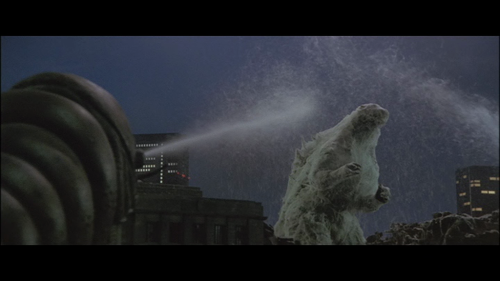

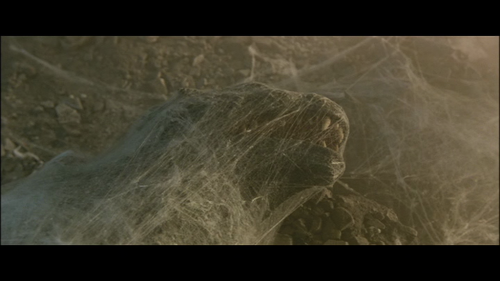
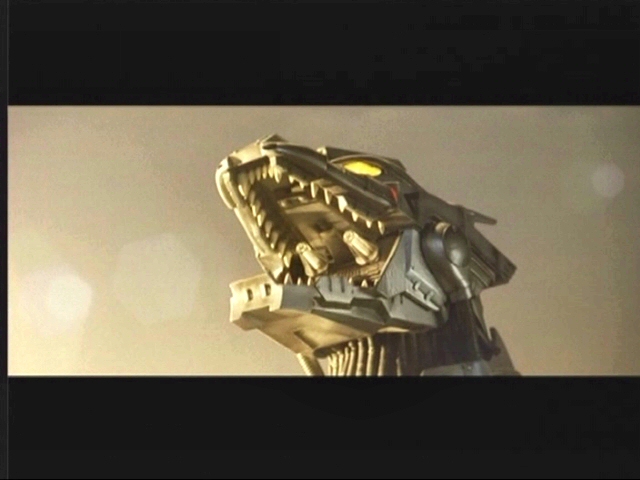
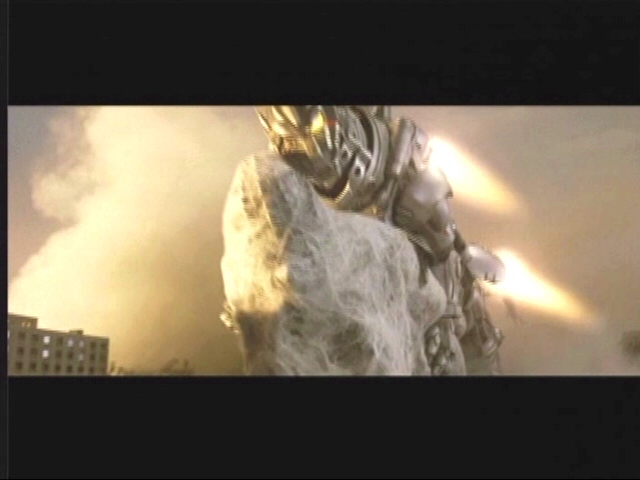 Said roar awakens Kiryu's memories once again, memories that Yoshito experiences while knocked out inside the machine. After a very quick recap of Kiryu's past life as the original Godzilla and its rebirth as a cyborg, Yoshito awakens with a start. Outside, the Mothra larvae begin cocooning Godzilla once again and this time, he's too injured to do anything about it and just lets the silk rain down on him. While Godzilla becomes completely covered in the silk to the point where he stops moving and falls, Yoshito tells Kiryu that he understands it now and says that he's sorry for its eternal rest being disturbed. He and everyone outside hears some otherworldly, vocalizing voices as the Shobijin say that Godzilla must now be returned to the sea and that no human being may touch the souls of the dead. Prime Minister Igarashi and everyone at HQ hears this along with the singing and when the Shobijin add that human beings must recognize their mistakes and correct them, Igarashi, after looking up at the completely cocooned Godzilla, tells Togashi to finish the mission, adding that this will be Kiryu's final job and the project will be scrapped afterwards. Upon hearing this, Togashi tells Akiba to fire the Hyper-Maser again but, when he hits the button, nothing happens. As the sun rises and the light pours down on Kiryu, the machine looks down at Godzilla and lets out a similar, mechanical roar, showing that it's become self-aware again. Everyone realizes this as it slowly stomps toward Godzilla, opens up its Hyper-Maser, lays down on top of him, firmly grabs ahold of him with both its hands and the gripping edges of the maser, and activates its booster jets to lift off with him. The Mothra larvae and everyone else watches as Kiryu carries Godzilla over the city and out to sea, with White Heron 2 following. Dobashi suggests shooting them down but Yoshito tells them not to, that Kiryu intends to sink itself with Godzilla in the Japan Trench. As Azusa pilots White Heron 2 right behind Kiryu, she notices the damaged door to the maintenance booth and asks Yoshito if he's still inside. After some pressing, he reluctantly admits that he is. Igarashi asks if he's piloting Kiryu but Yoshito says that he isn't. He adds that he's ready to die and that he'll go down with the cyborg. Azusa, however, is having none of that and aims White Heron 2 at Kiryu, telling Yoshito that she's coming for him. She manages to shoot the door open and Akiba tells Yoshito to jump out, that he'll pick him up. Yoshito attempts to climb up towards the door but is having difficulty with doing so when Kiryu suddenly turns upside down in mid-air, allowing him to get to the door more easily. Eventually, it gets to the point where Yoshito falls towards the door and grabs onto the edge. As he holds on for dear life, White Heron 2 maneuvers beneath him and Akiba screams for him to let go. Looking back up, Yoshito sees the monitor in the maintenance booth as a message scrawls across it before the inside door to it closes: SAYONARA YOSHITO.
Said roar awakens Kiryu's memories once again, memories that Yoshito experiences while knocked out inside the machine. After a very quick recap of Kiryu's past life as the original Godzilla and its rebirth as a cyborg, Yoshito awakens with a start. Outside, the Mothra larvae begin cocooning Godzilla once again and this time, he's too injured to do anything about it and just lets the silk rain down on him. While Godzilla becomes completely covered in the silk to the point where he stops moving and falls, Yoshito tells Kiryu that he understands it now and says that he's sorry for its eternal rest being disturbed. He and everyone outside hears some otherworldly, vocalizing voices as the Shobijin say that Godzilla must now be returned to the sea and that no human being may touch the souls of the dead. Prime Minister Igarashi and everyone at HQ hears this along with the singing and when the Shobijin add that human beings must recognize their mistakes and correct them, Igarashi, after looking up at the completely cocooned Godzilla, tells Togashi to finish the mission, adding that this will be Kiryu's final job and the project will be scrapped afterwards. Upon hearing this, Togashi tells Akiba to fire the Hyper-Maser again but, when he hits the button, nothing happens. As the sun rises and the light pours down on Kiryu, the machine looks down at Godzilla and lets out a similar, mechanical roar, showing that it's become self-aware again. Everyone realizes this as it slowly stomps toward Godzilla, opens up its Hyper-Maser, lays down on top of him, firmly grabs ahold of him with both its hands and the gripping edges of the maser, and activates its booster jets to lift off with him. The Mothra larvae and everyone else watches as Kiryu carries Godzilla over the city and out to sea, with White Heron 2 following. Dobashi suggests shooting them down but Yoshito tells them not to, that Kiryu intends to sink itself with Godzilla in the Japan Trench. As Azusa pilots White Heron 2 right behind Kiryu, she notices the damaged door to the maintenance booth and asks Yoshito if he's still inside. After some pressing, he reluctantly admits that he is. Igarashi asks if he's piloting Kiryu but Yoshito says that he isn't. He adds that he's ready to die and that he'll go down with the cyborg. Azusa, however, is having none of that and aims White Heron 2 at Kiryu, telling Yoshito that she's coming for him. She manages to shoot the door open and Akiba tells Yoshito to jump out, that he'll pick him up. Yoshito attempts to climb up towards the door but is having difficulty with doing so when Kiryu suddenly turns upside down in mid-air, allowing him to get to the door more easily. Eventually, it gets to the point where Yoshito falls towards the door and grabs onto the edge. As he holds on for dear life, White Heron 2 maneuvers beneath him and Akiba screams for him to let go. Looking back up, Yoshito sees the monitor in the maintenance booth as a message scrawls across it before the inside door to it closes: SAYONARA YOSHITO. 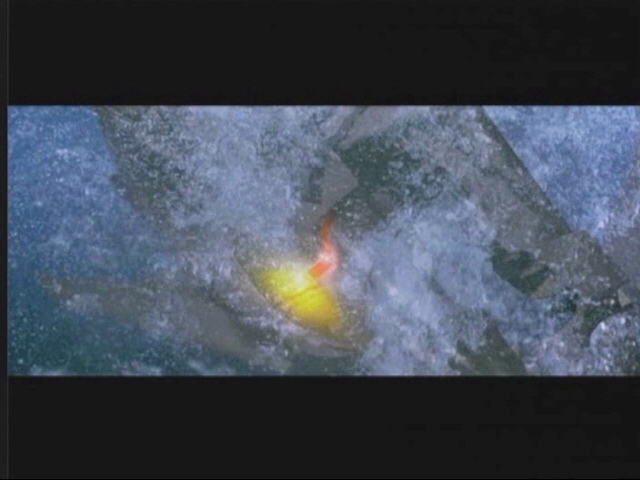 Yoshito returns the goodbye to Kiryu and lets go, flying backwards through the air as Akiba deploys his ejector seat and flies up and catches him. After their parachute deploys, Kiryu shoots out a cable that firmly ties Godzilla to its body and they watch as the cyborg aims its booster down towards the water and crashes down into it. Yoshito screams for Kiryu while the cyborg lets out one last roar beneath the water as it and Godzilla begin sinking slowly to the bottom of the trench, while the two men crash into the water nearby. Contact with Kiryu is completely lost at 3,850 meters, while those at HQ wonder if they can really call the outcome of the battle a victory. Igarashi says that it's more than likely a hollow victory and that they must indeed correct the mistakes they've made in the past, hoping that they've at least learned humility from all of this. Things then wrap up, with the military units standing down and heading to Shinagawa to begin reconstruction operations, the Mothra larvae heading for home with the Shobijin, and Yoshito and Akiba manage to get into a life-raft to wait to be picked up by Azusa. The Shobijin speak to Yoshito one last time, thanking him for seeing to it that the souls of the dead can now rest in peace. He then salutes the water upon hearing this as the credits begin to roll in front of shots of the calm sea, which eventually fade to a shot of Godzilla roaring and one last shot of him and Kiryu continuing descend to the bottom of the Japan Trench, with Godzilla howling as they do so. As the credits come to an end, the background shot becomes one of DNA stands holding themselves together with the camera pulling back to reveal a green test tube in a container in some kind of laboratory. A caption tells us that this is DNA extracted from Godzilla back in 1999 and as the camera continues pulling back, two doors slam shut with another caption saying that this is a DNA tank and that the place is a "Special Biotechnology Institute." Someone comes over the intercom to say that the "bioformation" of the extinct subject will commence soon, with the movie ending on this note that humanity still hasn't learned from its mistakes.
Yoshito returns the goodbye to Kiryu and lets go, flying backwards through the air as Akiba deploys his ejector seat and flies up and catches him. After their parachute deploys, Kiryu shoots out a cable that firmly ties Godzilla to its body and they watch as the cyborg aims its booster down towards the water and crashes down into it. Yoshito screams for Kiryu while the cyborg lets out one last roar beneath the water as it and Godzilla begin sinking slowly to the bottom of the trench, while the two men crash into the water nearby. Contact with Kiryu is completely lost at 3,850 meters, while those at HQ wonder if they can really call the outcome of the battle a victory. Igarashi says that it's more than likely a hollow victory and that they must indeed correct the mistakes they've made in the past, hoping that they've at least learned humility from all of this. Things then wrap up, with the military units standing down and heading to Shinagawa to begin reconstruction operations, the Mothra larvae heading for home with the Shobijin, and Yoshito and Akiba manage to get into a life-raft to wait to be picked up by Azusa. The Shobijin speak to Yoshito one last time, thanking him for seeing to it that the souls of the dead can now rest in peace. He then salutes the water upon hearing this as the credits begin to roll in front of shots of the calm sea, which eventually fade to a shot of Godzilla roaring and one last shot of him and Kiryu continuing descend to the bottom of the Japan Trench, with Godzilla howling as they do so. As the credits come to an end, the background shot becomes one of DNA stands holding themselves together with the camera pulling back to reveal a green test tube in a container in some kind of laboratory. A caption tells us that this is DNA extracted from Godzilla back in 1999 and as the camera continues pulling back, two doors slam shut with another caption saying that this is a DNA tank and that the place is a "Special Biotechnology Institute." Someone comes over the intercom to say that the "bioformation" of the extinct subject will commence soon, with the movie ending on this note that humanity still hasn't learned from its mistakes. Michiru Oshima once again provides the music and while it's still not the greatest the franchise has ever heard, I will say that her score here is a bit more memorable than the two she did before. As with Godzilla Against Mechagodzilla, you won't hear any of Akira Ifukube's familiar themes here, with Oshima opting to once again reuse the theme she came up with for Godzilla back in Godzilla vs. Megaguirus. As in the previous film, she makes sure not to beat it to death like she did the first time-around and as a result, the theme is much more tolerable and proves itself to be pretty good music. She also creates a new theme for Mothra and the Shobijin, which isn't too far off from the one Ifukube attached to them and suits their mystical properties well. That said, though, I don't like the way the Shobijin sing Mothra's song here. I've just heard it sung better before. While I still don't find Oshima's theme for Kiryu to be anything that special, sounding too much like some of the music back in Megaguirus, some of the other music she comes up with for the more dramatic moments involving the cyborg whenever it's soul is being discussed sounds really good. It's very soft and beautiful, creating a sense of sadness over how the original Godzilla was forced to become this weapon rather than be allowed to rest in peace, as the Shobijin said should have been allowed. The music becomes all the more beautiful and poetic as the film nears its climax, with Godzilla being wrapped up completely in the Mothra larvae's silk and Kiryu deciding to sink itself with him as the Shobijin comment on how this is what must be done. The same goes for the music that the movie ends on, which is a nice melody that seems to signify that Kiryu's soul can indeed finally rest in peace as the cyborg sinks to the bottom of the Japan Trench with its flesh-and-blood counterpart, bringing a sense of finality to the end of this story. It's really good stuff. The music for the action scenes is pretty generic and feels mainly recycled from the previous score but it still does its job well enough. Overall, this is probably the best Godzilla score that Oshima ever composed, seeing as how it gives more heart and soul to the movie than the filmmakers themselves do!
 The English dub for Godzilla: Tokyo S.O.S. is much better than the cringe-inducing one that was done for the previous film and the same goes for the subtitles on the Sony DVD release. It's still not the greatest English version of any one of these films ever produced but it's much more tolerable to listen to, mainly because there isn't a child character who's voiced in a very annoying way by an adult this time around! The only kid to be found here is Shun, whose dub voice isn't hard to take at all, although that may be because he's simply a side-character instead of one of the main cast. What's more, the voice actors seem to be taking this film a little more seriously than those who dubbed the previous film did, making for some more natural and less stilted performances. It's still the same voices that you've heard time and time again in these Hong Kong-based dubs and some of the voices could've been better, like the one given to the elderly Chujo (the voice just doesn't fit him), but for the most part, they're well done, particularly those given to Yoshito, Akiba, Igarashi, and Azusa. The dialogue as a whole is much better as well and doesn't stray that far off from the subtitles so it doesn't feel like you're watching two completely different movies this time. There are some odd things, though, with the most noticeable one being that the name "Kiryu" is never spoken in the English dialogue or in the subtitles, despite the fact that in the Japanese language audio, you can hear that they are indeed calling the cyborg by that name. That wasn't the case for the previous film at all. Also, I noticed that in the closing scene at the Biotechnology Institute, you don't hear the announcement about the "bioformation" commencing soon in the English dub. If you watched the English audio and turned off the subtitles, which do translate it, you would never even know that anything was being said. It's strange since, again, the subtitles mainly follow the English dialogue. But, those oddities aside, the English dub and presentation of this film is much better than its predecessor, making this Sony DVD a much more satisfying purchase.
The English dub for Godzilla: Tokyo S.O.S. is much better than the cringe-inducing one that was done for the previous film and the same goes for the subtitles on the Sony DVD release. It's still not the greatest English version of any one of these films ever produced but it's much more tolerable to listen to, mainly because there isn't a child character who's voiced in a very annoying way by an adult this time around! The only kid to be found here is Shun, whose dub voice isn't hard to take at all, although that may be because he's simply a side-character instead of one of the main cast. What's more, the voice actors seem to be taking this film a little more seriously than those who dubbed the previous film did, making for some more natural and less stilted performances. It's still the same voices that you've heard time and time again in these Hong Kong-based dubs and some of the voices could've been better, like the one given to the elderly Chujo (the voice just doesn't fit him), but for the most part, they're well done, particularly those given to Yoshito, Akiba, Igarashi, and Azusa. The dialogue as a whole is much better as well and doesn't stray that far off from the subtitles so it doesn't feel like you're watching two completely different movies this time. There are some odd things, though, with the most noticeable one being that the name "Kiryu" is never spoken in the English dialogue or in the subtitles, despite the fact that in the Japanese language audio, you can hear that they are indeed calling the cyborg by that name. That wasn't the case for the previous film at all. Also, I noticed that in the closing scene at the Biotechnology Institute, you don't hear the announcement about the "bioformation" commencing soon in the English dub. If you watched the English audio and turned off the subtitles, which do translate it, you would never even know that anything was being said. It's strange since, again, the subtitles mainly follow the English dialogue. But, those oddities aside, the English dub and presentation of this film is much better than its predecessor, making this Sony DVD a much more satisfying purchase.  Godzilla: Tokyo S.O.S. is not a very enjoyable film. It's not awful but, like the film before it, it's just competent, which may be even worse. It's yet another run-of-the-mill, formulaic movie with characters who are little more than archetypes, a story that doesn't reach the depth and complexity that it has the potential to, a Godzilla who has nothing to him even though they do try to give him a little bit more, and so on. However, what makes this one especially disappointing is that it not only makes the same mistakes that some of the previous films have, going as far as to repeat many of the basic story moments from the last movie and not build on the interesting concept that they threw out there previously at all (which is what a sequel should do), but that it also makes some major ones of its own that drag it down even more. The pacing of the film is terrible, with the last hour or so of the movie being one long monster battle that gets tedious very quickly and makes me very antsy whenever I try to sit through it; the attempt to tell a more serious and deep story this time around falls flat on its face since the filmmakers don't do so in any new way or even do much with it, once again feeling that simply putting it out there is enough; and ultimately, the film tries to make you feel that something major has taken place by the end but it instead just leaves you sitting there feeling rather numb and empty, even more so than you did at the end of the last movie. Yes, the movie is well-made technically, with good special effects and monster suits, a nice overall look to it, and a score that is more effective and gives the movie more heart than anything the filmmakers do, but that's no excuse for how they seem to content to rest on their laurels and make bland, unoriginal, average films while portending to be telling deeper stories than they really are. If you think you can get some enjoyment out of this film, be my guest, but for me, this is one of the blandest, most forgettable Godzilla movies ever and a prime example of the annoying rut that Toho was stuck in for the majority of the Millennium cycle.
Godzilla: Tokyo S.O.S. is not a very enjoyable film. It's not awful but, like the film before it, it's just competent, which may be even worse. It's yet another run-of-the-mill, formulaic movie with characters who are little more than archetypes, a story that doesn't reach the depth and complexity that it has the potential to, a Godzilla who has nothing to him even though they do try to give him a little bit more, and so on. However, what makes this one especially disappointing is that it not only makes the same mistakes that some of the previous films have, going as far as to repeat many of the basic story moments from the last movie and not build on the interesting concept that they threw out there previously at all (which is what a sequel should do), but that it also makes some major ones of its own that drag it down even more. The pacing of the film is terrible, with the last hour or so of the movie being one long monster battle that gets tedious very quickly and makes me very antsy whenever I try to sit through it; the attempt to tell a more serious and deep story this time around falls flat on its face since the filmmakers don't do so in any new way or even do much with it, once again feeling that simply putting it out there is enough; and ultimately, the film tries to make you feel that something major has taken place by the end but it instead just leaves you sitting there feeling rather numb and empty, even more so than you did at the end of the last movie. Yes, the movie is well-made technically, with good special effects and monster suits, a nice overall look to it, and a score that is more effective and gives the movie more heart than anything the filmmakers do, but that's no excuse for how they seem to content to rest on their laurels and make bland, unoriginal, average films while portending to be telling deeper stories than they really are. If you think you can get some enjoyment out of this film, be my guest, but for me, this is one of the blandest, most forgettable Godzilla movies ever and a prime example of the annoying rut that Toho was stuck in for the majority of the Millennium cycle.
One of the most forgettable Godzilla movies considering that it's got boring human characters and lackluster fight scenes. Add to the fact that it's got some plotholes makes this one even more forgettable!
ReplyDeleteWithout a doubt one of if not the most forgettable movie of the millennium series considering that it was even more boring and forgettable than the previous movie. Add to the fact that Mothra appears in this movie despite already appearing in GMK makes this one a rather boring and forgettable movie even by Godzilla standards!
ReplyDelete